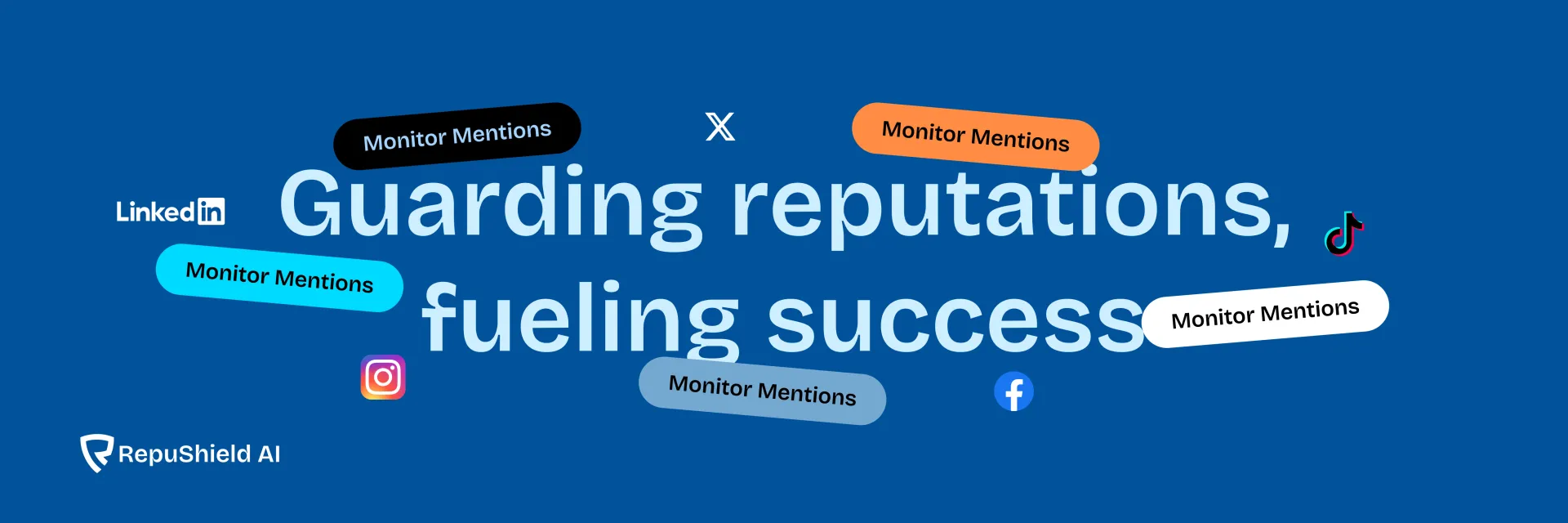Install Huzzler App
Install our app for a better experience and quick access to Huzzler.
Hi everyone,
Excited to share a platform called "Ask Your Audience" designed to help creators, marketers, and product teams connect directly with their target audience for quick feedback.
What it is: "Ask Your Audience" is an AI-powered consumer insights platform. The core idea is to provide instant access to audience perspectives using "Human Digital Twins." Users can define their target audience (by age, location, etc.), and the platform provides AI representations reflecting that group. You can then ask questions, present ideas, or show creative concepts directly to these Digital Twins in a conversational interface.
Key features highlighted include:
- Virtual Focus Groups: Get collective reactions from a panel of Digital Twins.
- One-on-One Interviews: Have detailed conversations with a specific audience profile's Digital Twin.
- Creative Testing: Show visuals or concepts and get instant feedback on perception.
(Features like A/B Testing and Pricing Analysis are mentioned as coming soon).
The platform aims to deliver qualitative insights much faster (minutes vs. weeks) than traditional methods, while being cost-effective and reducing biases like groupthink. It's stated to have over 85% alignment with real consumer responses based on academic validation.
How it was built: The platform leverages proprietary "Human Digital Twins," which combine real human personas with AI. It's described as using academically validated AI technology to power its insights engine.
(Specific tech stack details aren't provided in the info, but the core is AI-driven persona simulation).
This project aims to solve the challenge of getting fast, authentic, and targeted audience feedback. Would love to hear any thoughts or constructive feedback from the community, especially from those involved in product development, UX/UI, or marketing!
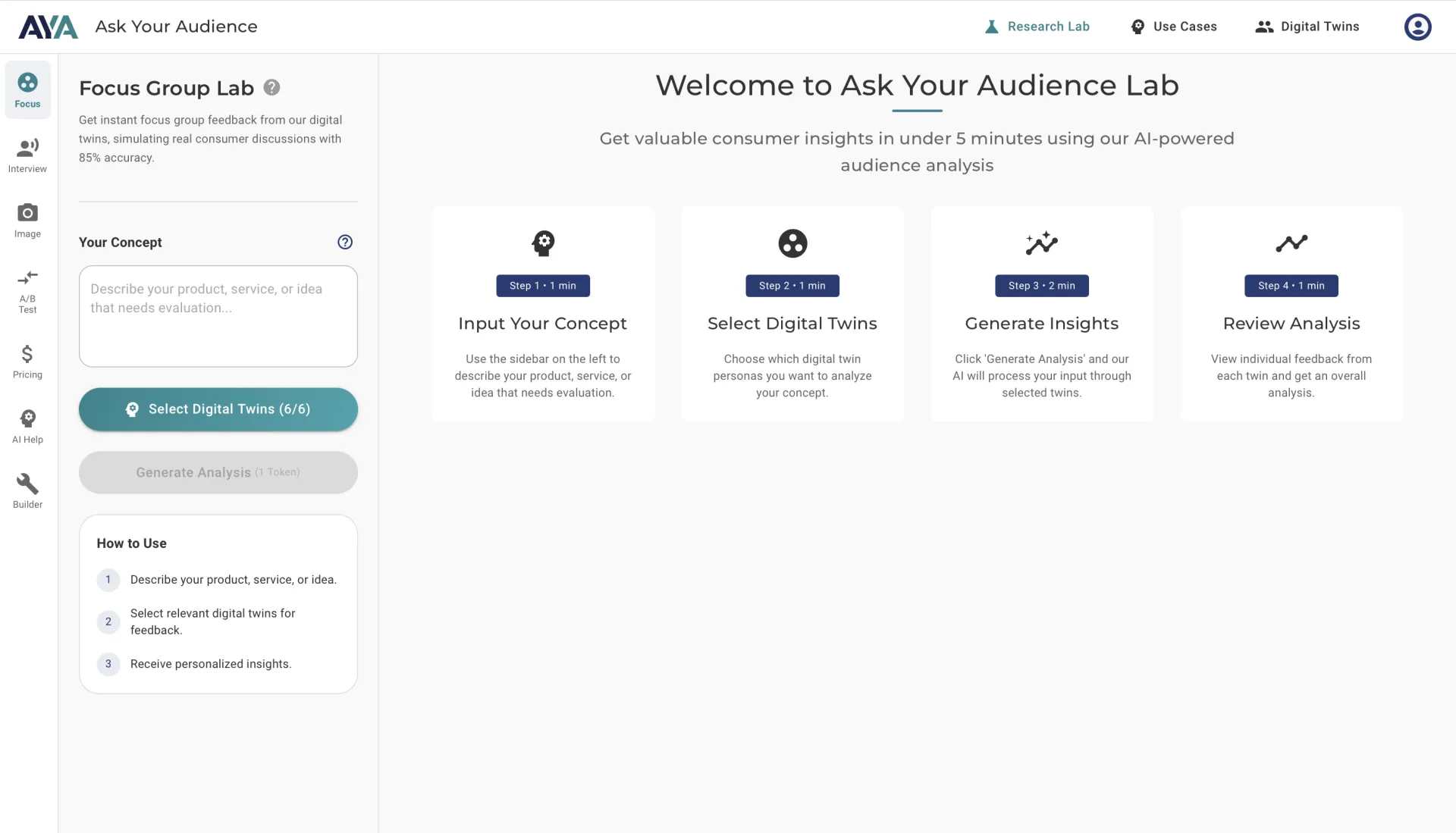
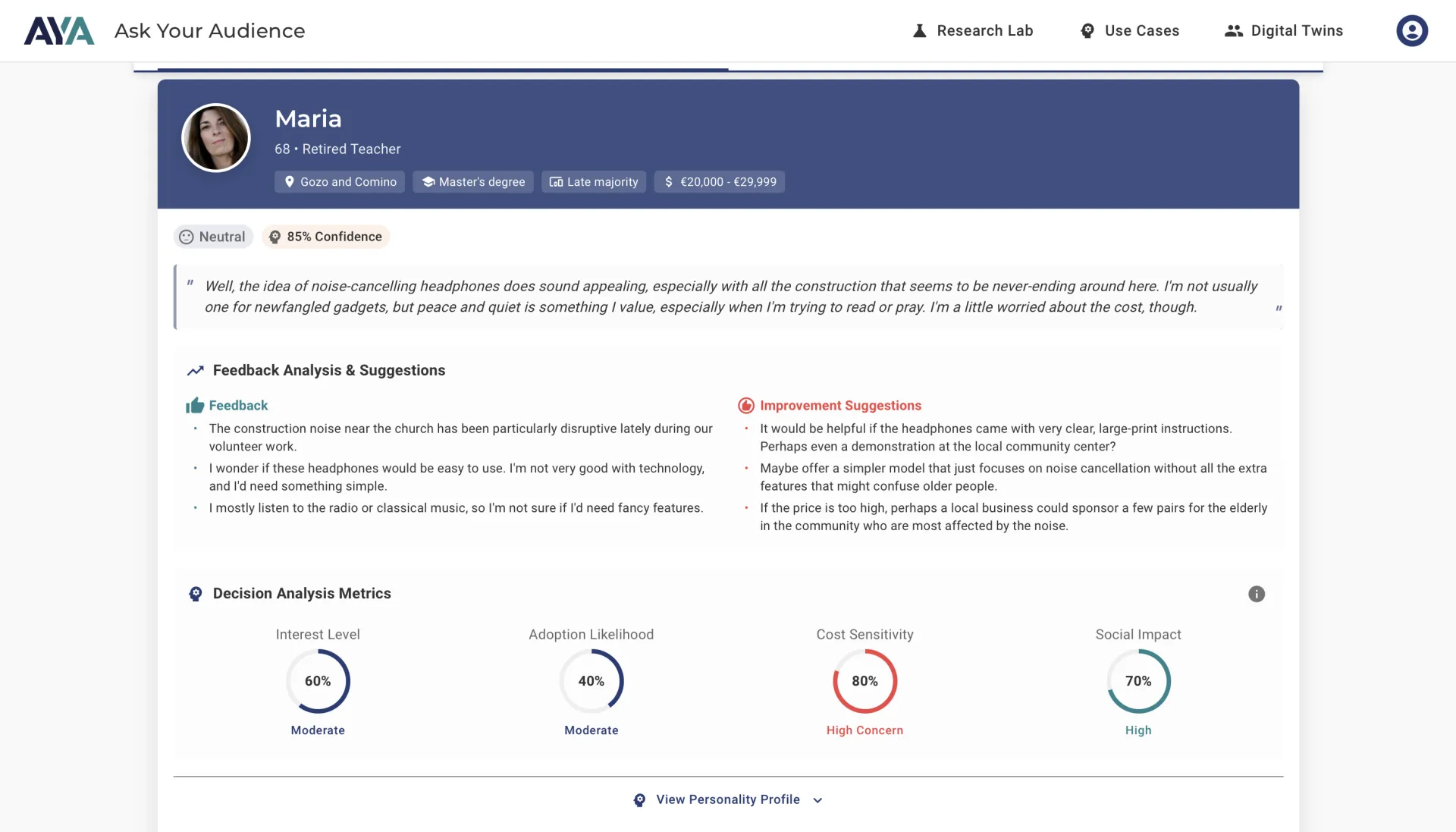
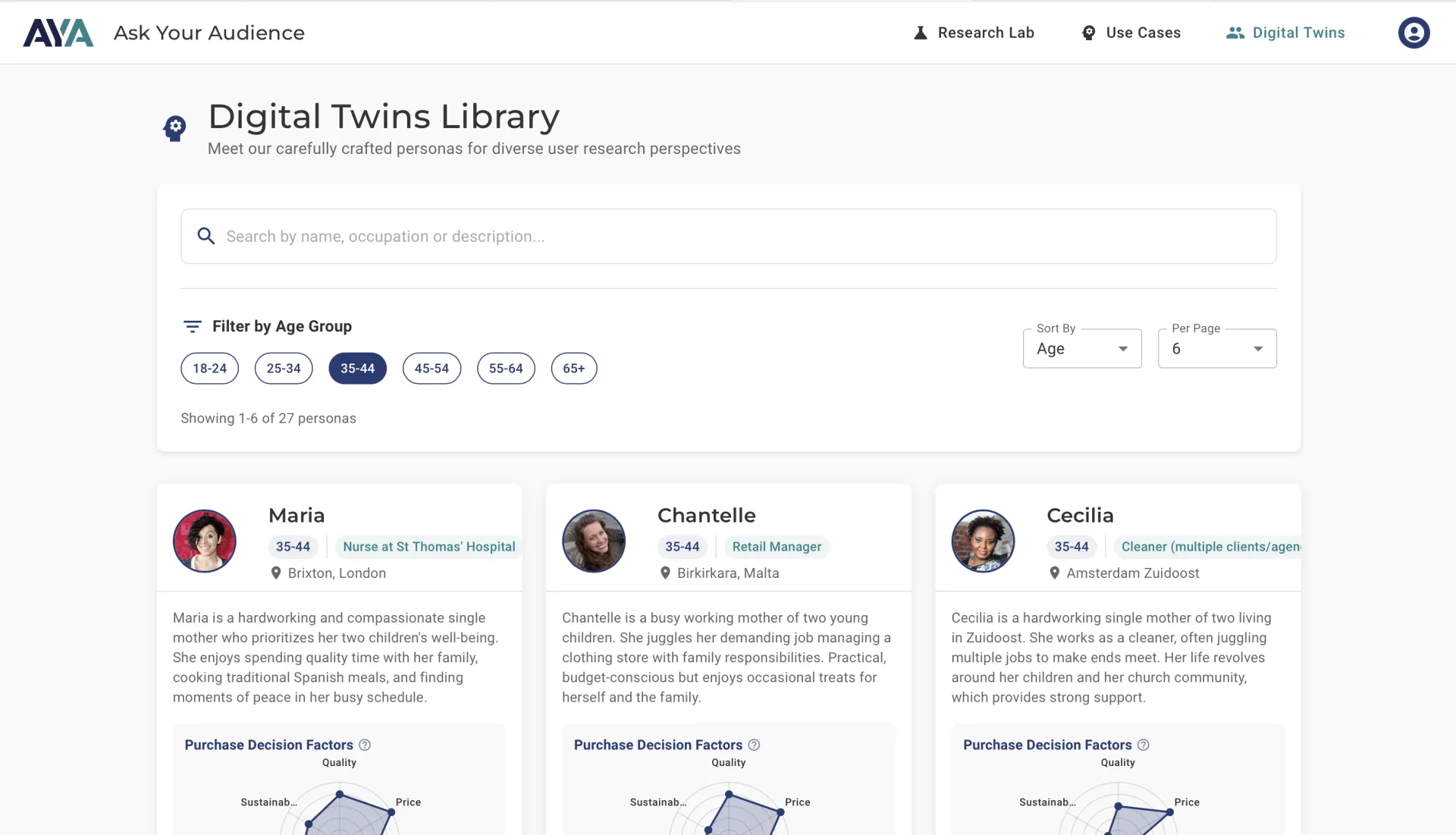
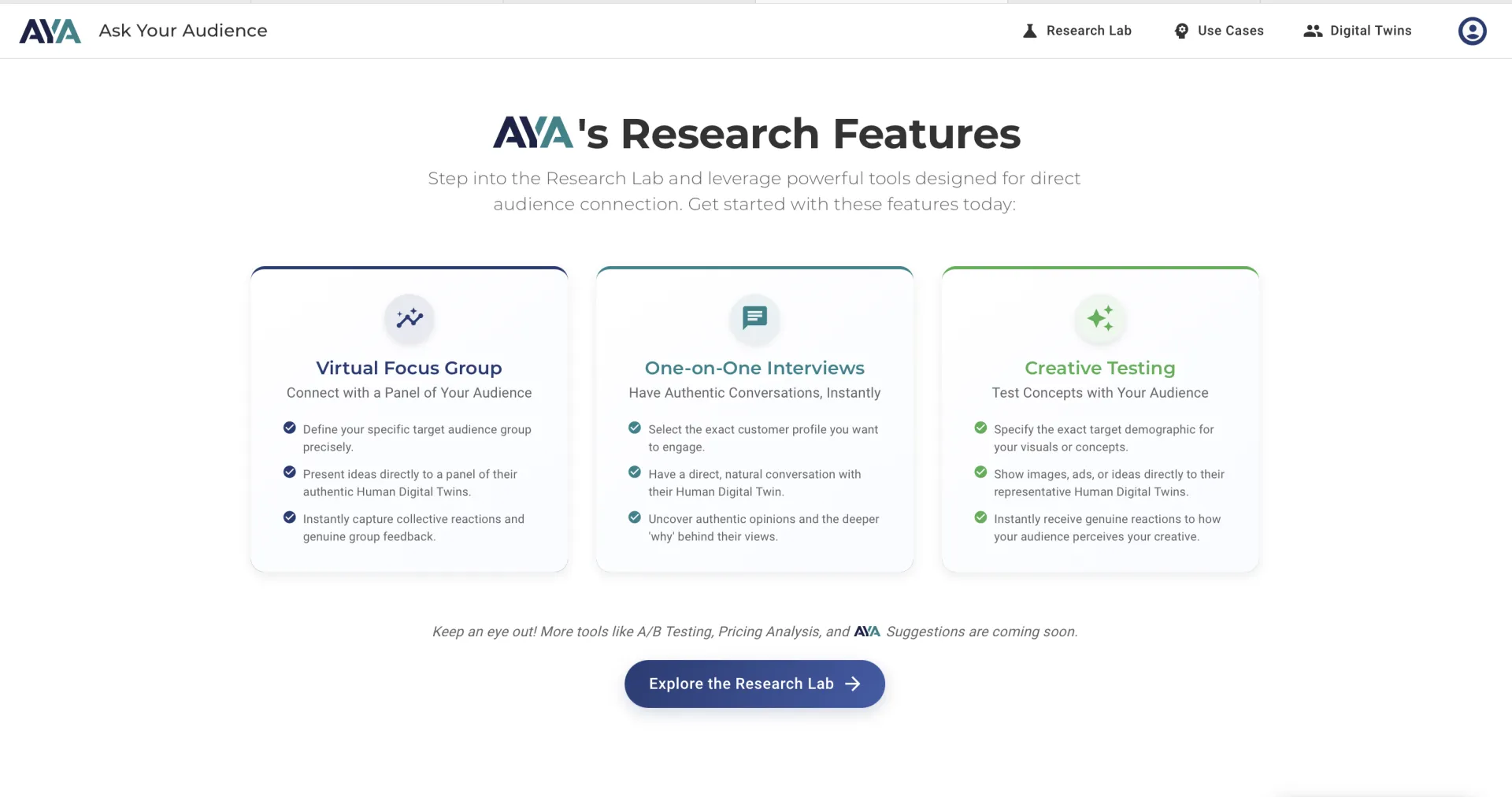
I’ve always loved games where you start at the bottom of a strange world and slowly climb your way up — learning the rules, bending them, and maybe rewriting them.
So I imagined a world like that.
A place with rival factions, shifting alliances, whispered deals, and sudden promotions.
Where completing a task isn’t just about getting it done — it’s about who benefits.
Where influence is everything.
I built it from scratch, using GPT-4, Supabase, and Lovable.
But it’s not set in a medieval kingdom or a dystopian wasteland.
It’s set in a modern-day corporate office.
Corporate Life Simulator is a multiplayer game where you join a department — HR, Sales, IT, Marketing, Legal or Ops — and try to survive the internal power games.
You complete tasks, build your rep, and (soon) craft items, trade with others, and fight for promotions like your life depends on it.
I’ve worked remotely for over a decade.
Turns out, I missed the absurdity of office life more than I thought.
Here’s a teaser image I made. Would love feedback. Or at least a passive-aggressive memo.
👉 You can try the demo or sign up here: https://corporatelifesimulator.com

Hey Huzzler community!
After watching 1000+ of you launch here, I've started noticing a common pattern among SaaS launches:
Month 1-6: Build incredible product ✅
Month 7: Launch on Huzzler and get great feedback
Month 8: "No customers.. Maybe I need more features?" 🤔
Month 12: Still struggling with real customers... 😰
Here's the thing, almost everyone in this community can build. You're all incredibly talented.
We try posting on Product Hunt, tweeting, building in public... but our acutal customers are not browsing these sites. They're busy doing their jobs at companies.
That's why I'm building Customer Engine: a systematic approach to getting customers where you get exact daily tasks to get your first B2B customers.
Instead of: "What should I do today to get customers?"
You get: "Send 8 LinkedIn requests to marketing managers using template #3"
And you can actually see what's actually working for other founders (with real numbers).
Question for you guys: What's your biggest problem after launching your product? Is it getting the first real customers (who are not founders themselves)?
Would love your thoughts!
Waitlist: customerengine.co
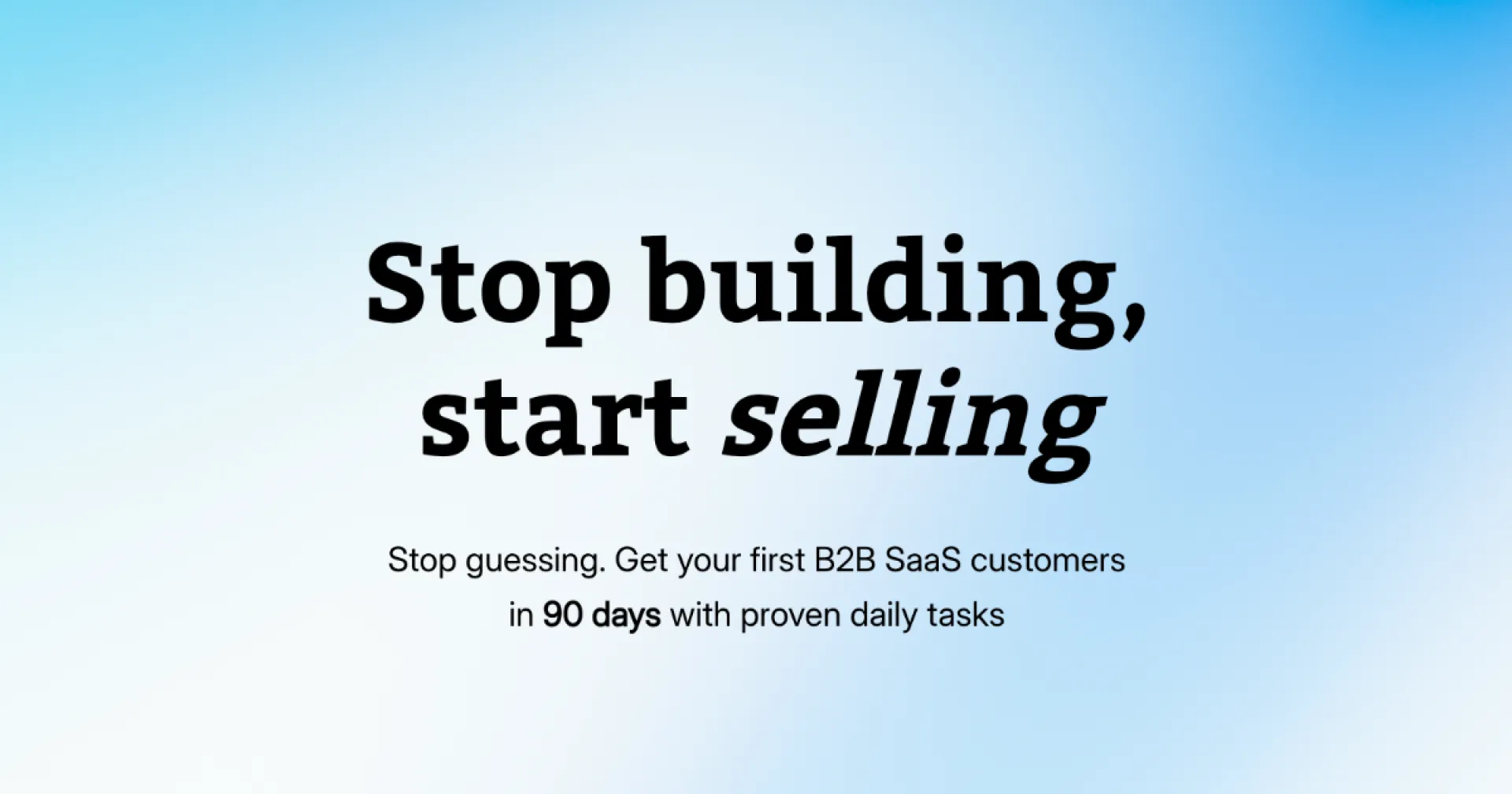
For one of my other projects, Reddit has been a great source of traffic and has resulted in hundreds of users. What I found to be pretty tedious was constantly scrolling through Reddit and/or searching Reddit to try and find posts that might be relevant to my product where I comment some value and subtly promote it. There were hundreds of posts, majority of which weren't relevant. So I thought, surely this could be automated, no? That's when I decided to build ReplyFinder.
How does it work?
It's quite straightforward. First, add your keywords that you think will be commonly mentioned in discussions regarding your product on Reddit. Then, provide some context to the AI about your product, what kind of posts you find relevant, and some guidelines for how it should generate responses. After that, you're all set! Our AI will monitor Reddit, analyzing posts it finds and determines if they are relevant to your product or not. If they are, it generates a suggested reply, which you can view on the dashboard. I've also got an auto commenting feature in beta, where you can link a Reddit account and approve replys to be posted in one click via the dashboard.
I've currently got a 7 day free trial setup, so if this sounds like something you could use to market your product give it a go! Also, if anyone has questions or feedback, I'd love to hear it. Thanks for checking out my post!
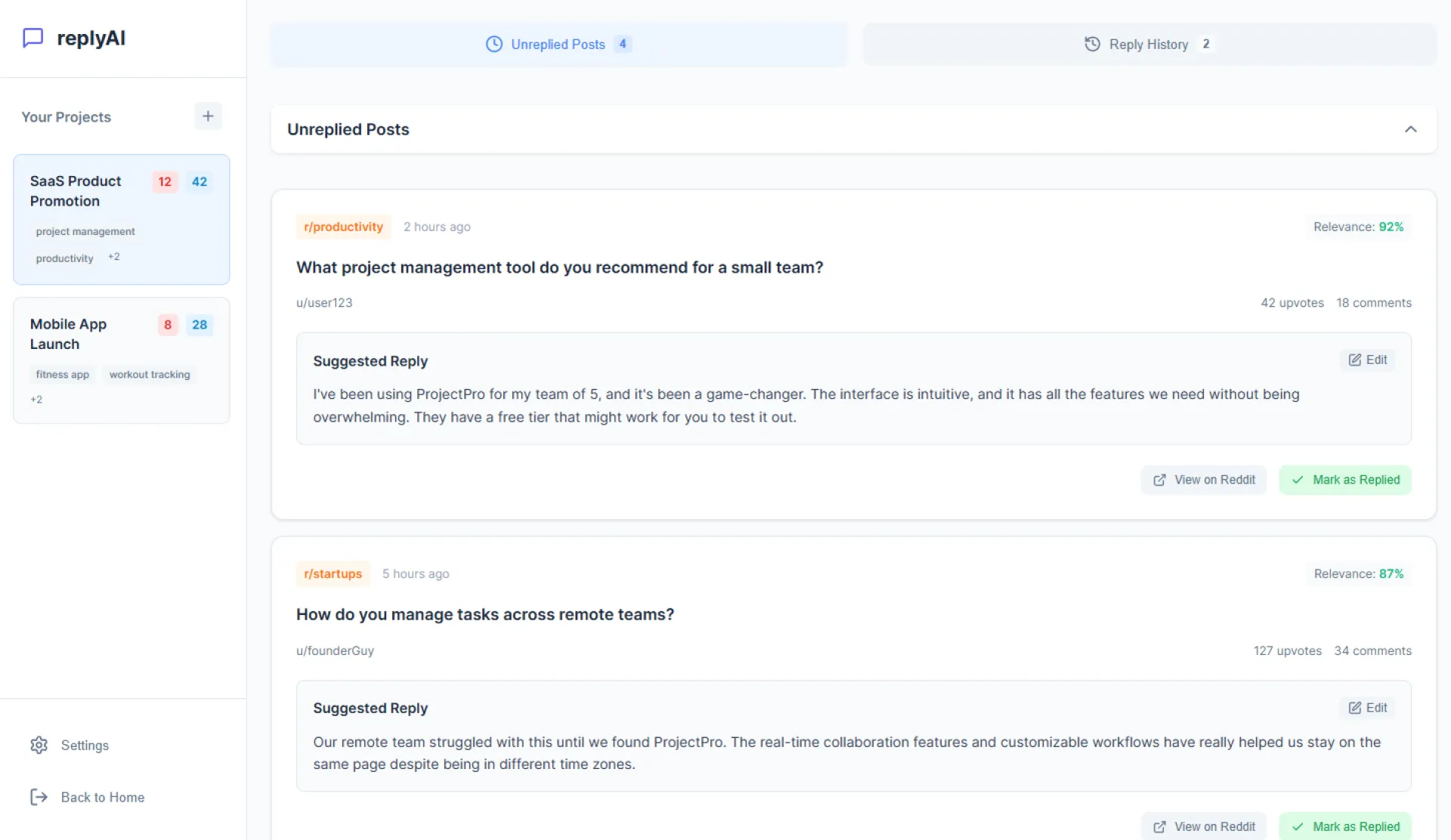
Hey! Two monts ago I launched Flippr, an AI tool for resellers that lets you upload a picture of games or movies and it will find the current going price and sell-through rate of those items! The data comes from sold eBay data. In the next month, we will be releasing Amazon data for FBA sellers! Check it out for free and let me know your thoughts!
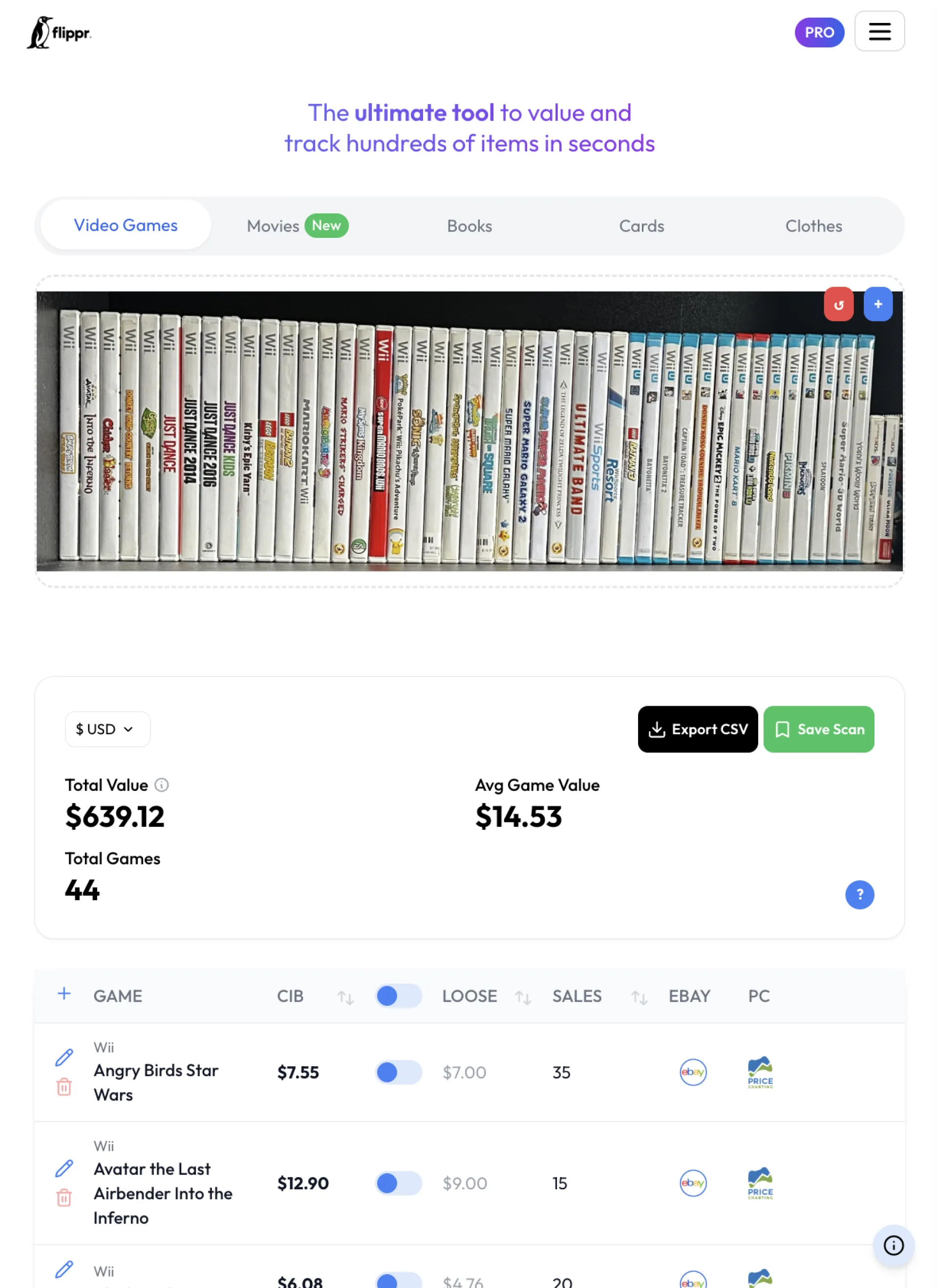
Hello everyone! I'm excited to share a project I've been working on - an AI-driven investment platform called StockSageAI.
What I Built
StockSageAI is a comprehensive platform that helps investors make smarter decisions through AI-powered analytics, screening, and portfolio management. It features:
- Market Indices: Tracks major market indices across US and Indian markets, providing real-time performance data, historical trends, and comparative analysis. Users can visualize index movements and correlations, helping them understand broader market conditions that influence their investment decisions.
- Stock Analysis and Prediction: Offers in-depth stock analysis with technical indicators, fundamental metrics, and price pattern recognition. The system provides peer comparison, relative performance analysis, and visualizes historical price movements to help identify trends. Our predictive models generate insights on potential future performance based on historical patterns and market conditions.
- Portfolio Management: Empowers users to track their investments in a unified dashboard with detailed metrics on performance, allocation, and returns. The platform supports transaction tracking, automatically calculates realized and unrealized gains, and provides sector-based diversification analysis. Users can simulate 'what-if' scenarios to see how portfolio changes might affect overall performance.
- Portfolio Health: Evaluates portfolio robustness through a comprehensive health scoring system that analyzes diversification, risk alignment, sector allocation, and performance metrics. The system generates actionable insights and highlights potential vulnerabilities, recommending specific adjustments to improve portfolio resilience and alignment with investment goals.
- AI Portfolio Advisor: Creates personalized investment portfolios based on user-defined parameters like risk profile, investment goals, and time horizon. The AI optimizes stock selection and weighting using sophisticated mathematical models, considers budget constraints to provide actionable investment plans, and rebalances recommendations over time as market conditions change.
- Research & Analysis: Provides a comprehensive research environment with sector analysis, undervalued stock identification, and emerging trend spotting. The platform aggregates and analyzes financial metrics across market segments, helping identify opportunities that match specific investment criteria. Custom screening capabilities allow users to build and save their own research parameters for ongoing monitoring.
- Advanced Stock Screener: Includes 20+ ready-to-use screening strategies covering value investing, growth stocks, dividend income, technical patterns, and more. Users can also create custom screens using natural language queries.
- Multi-Market Support: Full support for both US and Indian markets with appropriate currency handling and market-specific metrics.
How I Built It
Technology Stack
- Backend: Python with SQLAlchemy for ORM
- Frontend: Streamlit for the interactive web interface
- Data Processing: pandas, numpy, and scipy for financial calculations and optimization
- Visualization: Plotly for interactive charts and performance visualizations
- Market Data: Integration with financial APIs for real-time price data
Key Technical Challenges
- Portfolio Optimization Algorithm: I implemented a sophisticated portfolio optimization engine using mean-variance optimization with custom risk weighting and diversification constraints. This involved advanced mathematical modeling to balance expected returns against volatility.
- Natural Language Query Engine: Created a system that translates natural language queries like "P/E < 15 AND ROE > 15" into structured database queries, making stock screening more accessible.
- Efficient Backtesting: Developed a robust backtesting system that can analyze historical performance of portfolios against benchmark indices, all within a responsive web interface.
- Data Consistency: Built a resilient database layer with transaction management and proper error handling to ensure data integrity across concurrent user sessions.
- Market Analysis Integration: Implemented algorithms to identify correlations between market indices and individual stocks, helping users understand how broader market movements might affect their specific holdings.
- Predictive Modeling Pipeline: Designed a modular system that combines technical indicators, fundamental data, and market sentiment to generate stock performance predictions with confidence intervals.
Learning Journey
The most challenging aspect was implementing the portfolio optimization algorithm to handle varying investment amounts while maintaining target allocation weights. I spent significant time researching financial modeling techniques and refining the algorithm to ensure it produces realistic, implementable portfolios.
Working with financial data presented unique challenges around handling missing values, currency conversions, and addressing edge cases in market data. These experiences significantly improved my data engineering skills.
Building the portfolio health analysis system required significant research into risk metrics and diversification measurement techniques to create a scoring system that provides genuinely useful insights rather than just raw numbers.
Next Steps
I'm currently working on enhancing the platform with:
- Machine learning for anomaly detection in stock prices
- Additional portfolio optimization strategies
- Improved real-time notifications for price movements
- More sophisticated backtesting capabilities
- Integration with economic indicators for better macroeconomic context
- Enhanced natural language processing for more intuitive research queries
I'd love to hear any feedback or suggestions from the community, particularly around the portfolio optimization algorithm or ways to make the platform more intuitive for non-technical users!
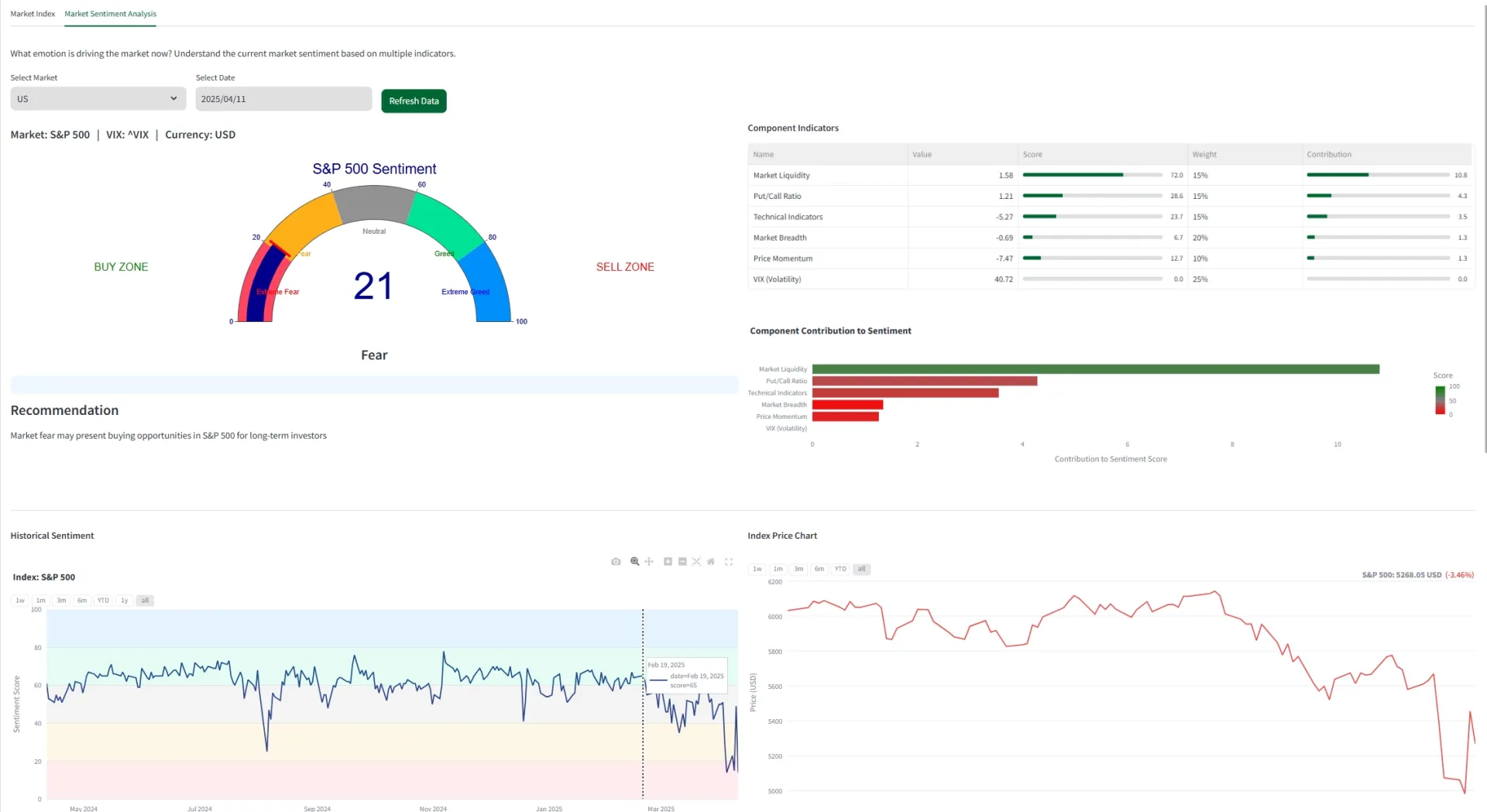
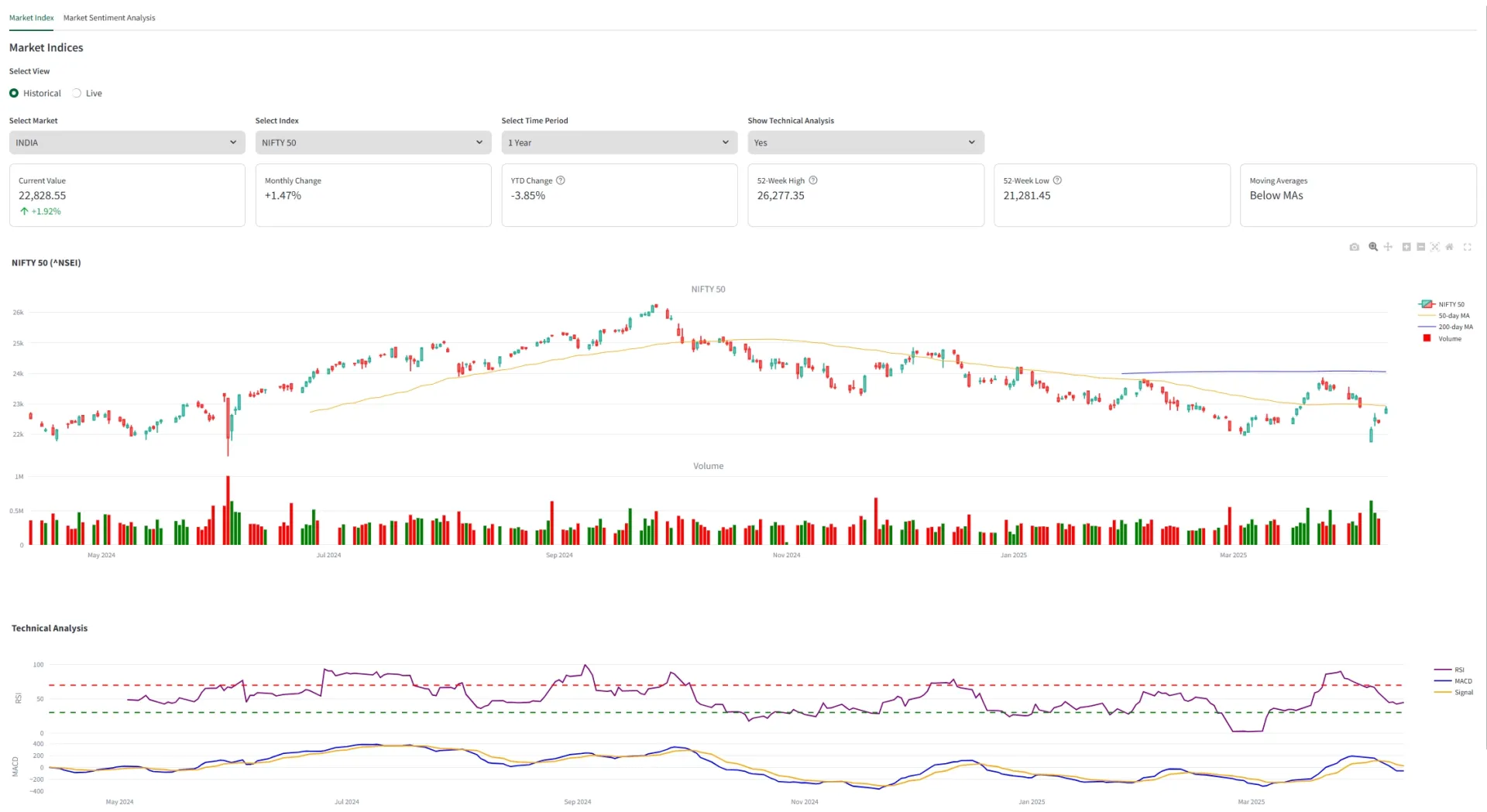
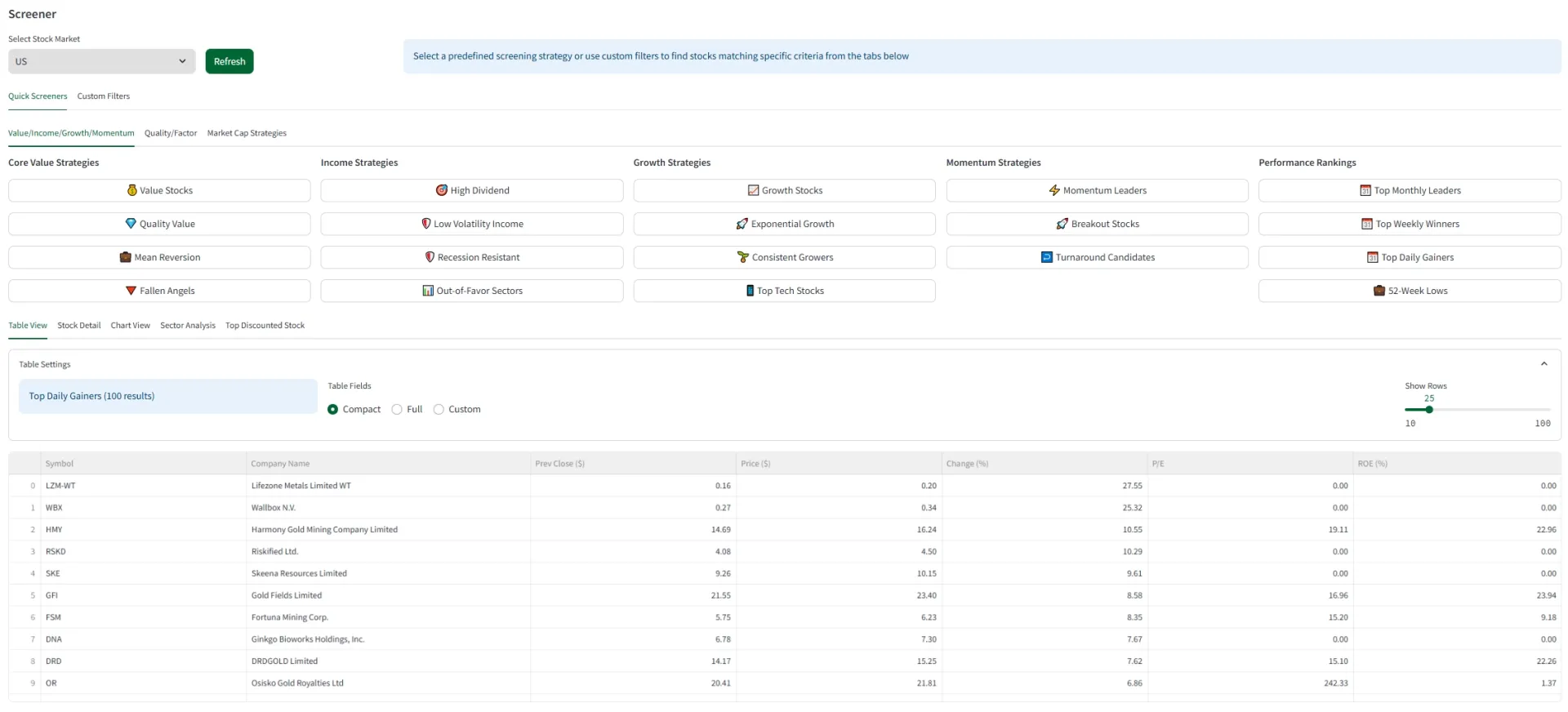
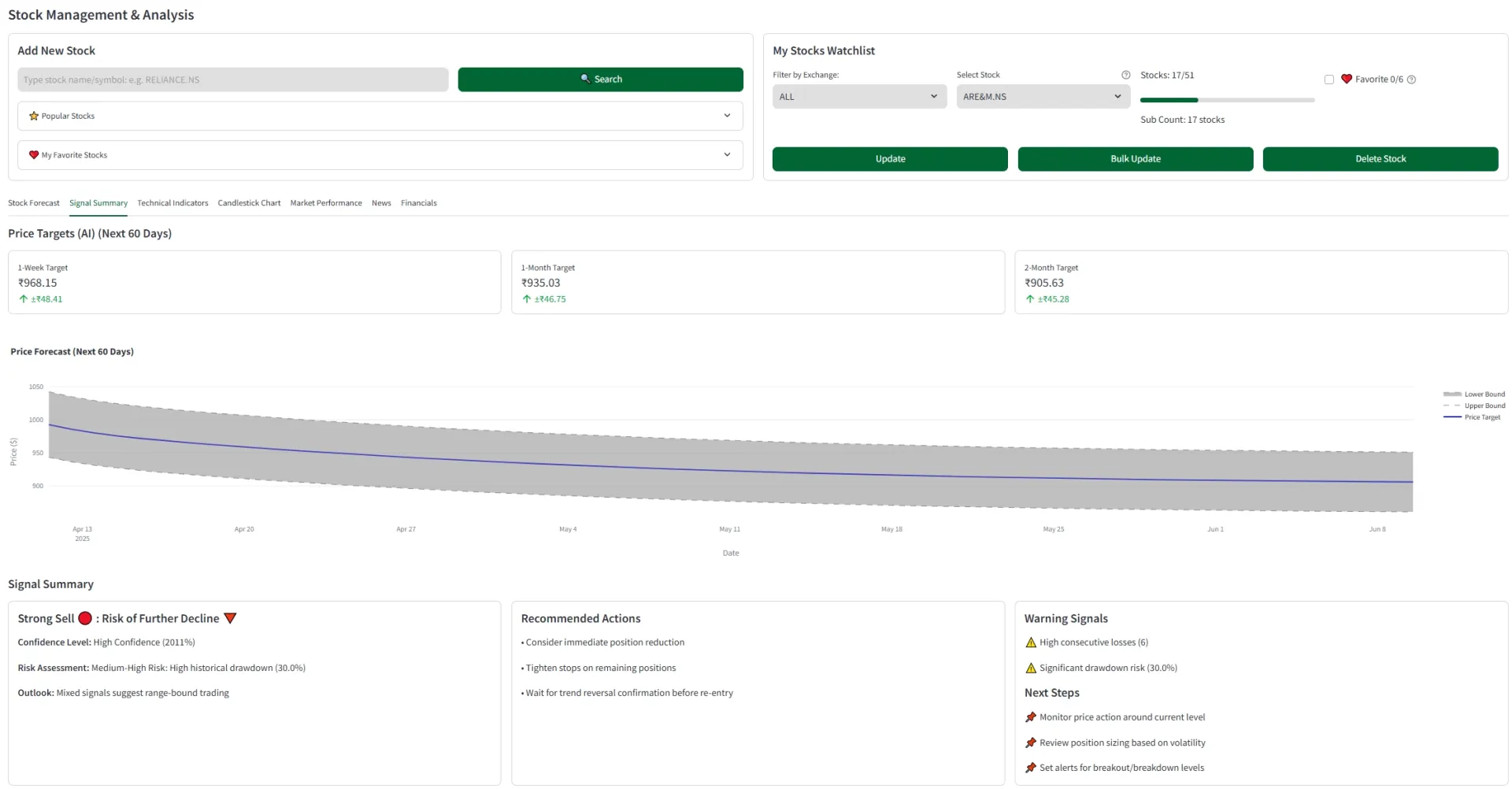
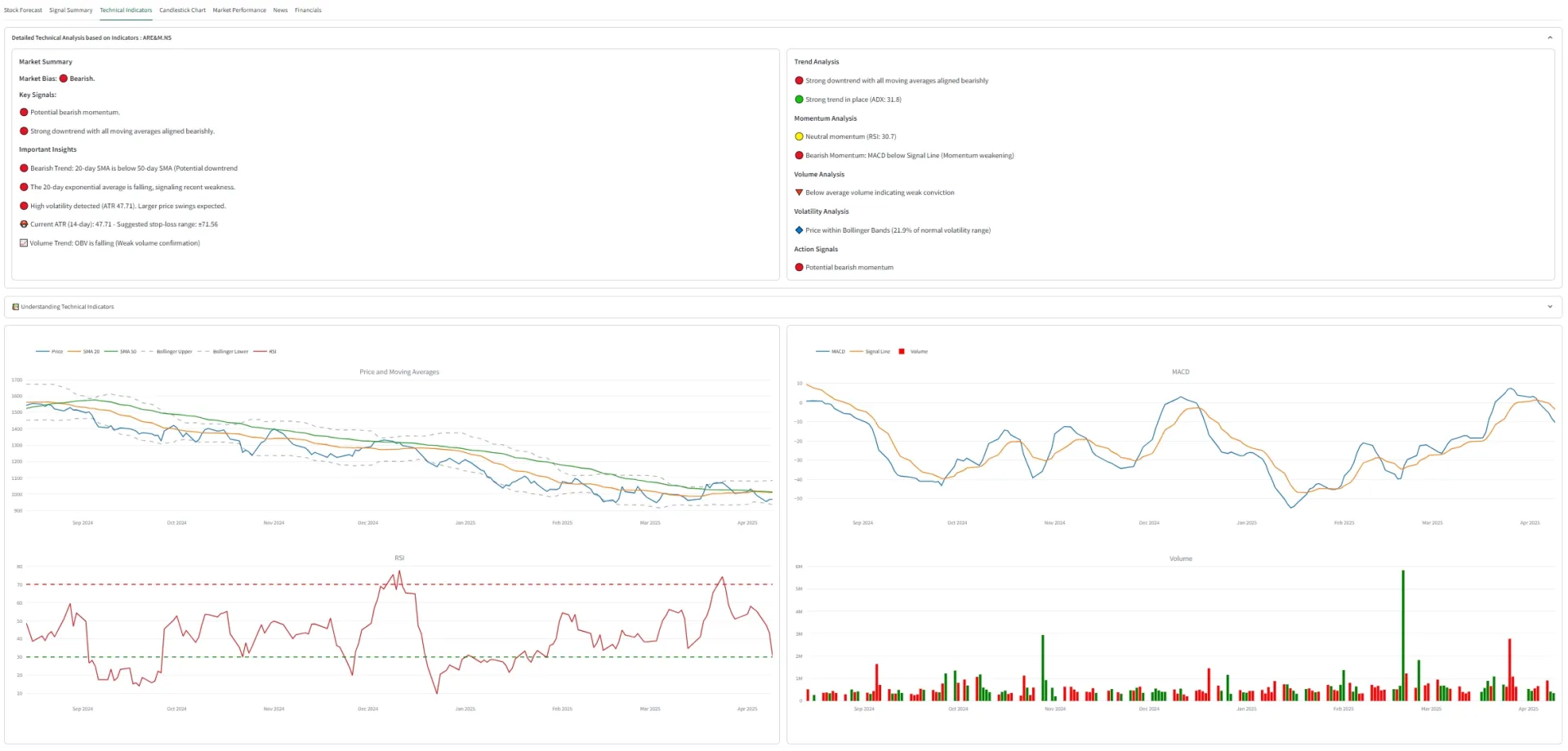
If you have ever imported an Excel spreadsheet into the company system or prepared it for future use - you know how much time it takes. Syncra can help you with that!
We can:
- rearrange data in whichever format you want (divide and merge data in desired column format),
- find missing, but required data,
- tell you about anomalies in your data (like negative price - we know it happens),
- and many more!
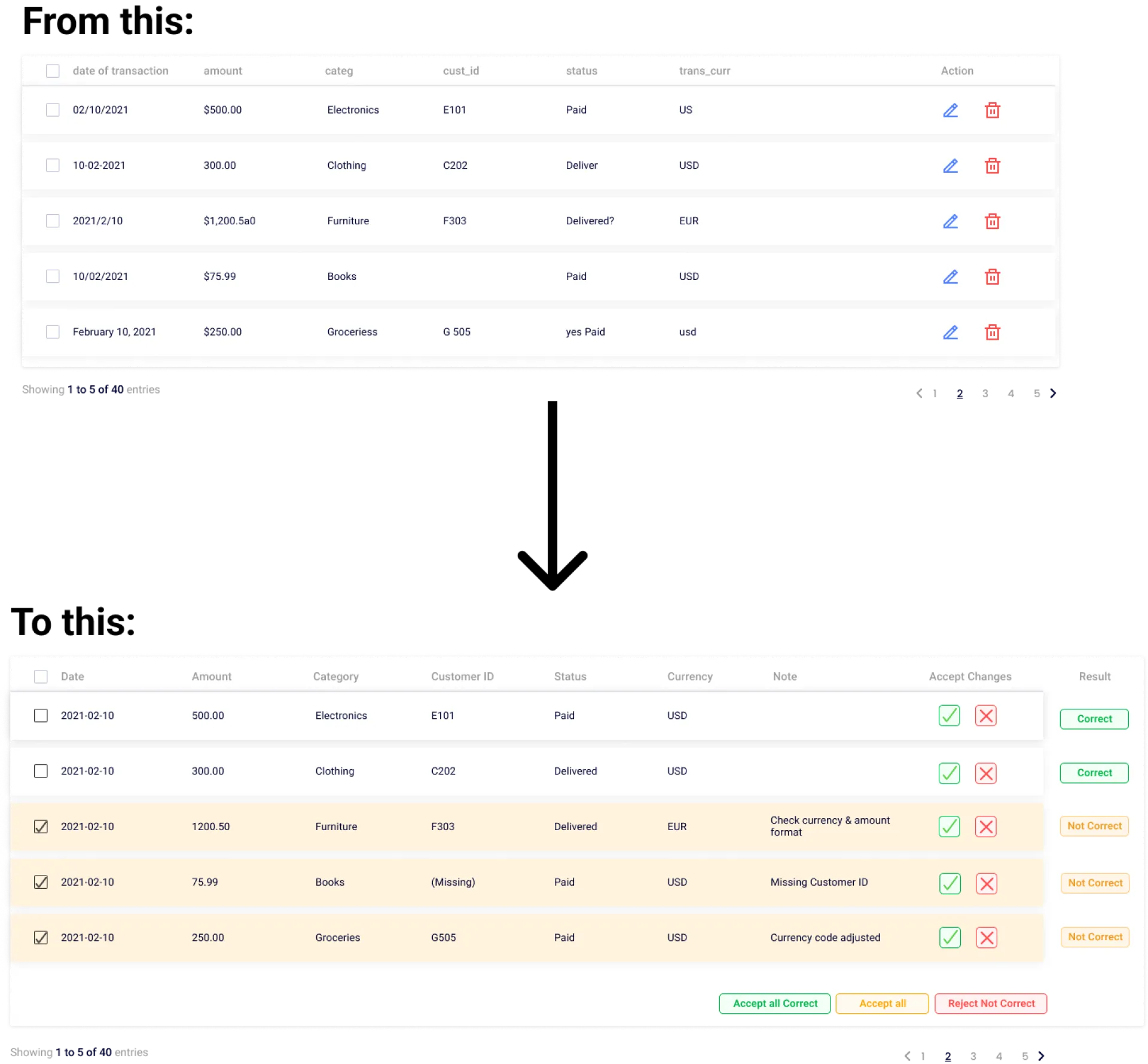
A year ago, I launched 21DaysTransform.com — a simple habit-building platform based on the system I used to lose 30kg and reverse type 2 diabetes. I made it paid (₹499). I got just 4 paid users.
So I shut it down.
But I couldn’t ignore what it did for me — and what it could do for others.
Last month, I brought it back.
This time, free. Clean. Focused.
Here’s what I learned:
• People don’t want “yet another productivity app.” They want something they can actually do.
• Showing exactly what they’ll do for 21 days (real habits like walking, journaling, digital detox, no sugar) converts way better than selling outcomes.
• A clear journey (with small daily wins) is 10x more motivating than “track everything yourself.”
• Emojis, short copy, and real-life images = engagement.
What it is now:
• 21 simple challenges — one new habit each day
• Fitness, mindfulness, productivity, and financial awareness
• No fluff. Just transformation, one day at a time.
If you’re building something and feel like it’s not working — maybe just change how you deliver the value, not the value itself.
Try it free: 21DaysTransform.com
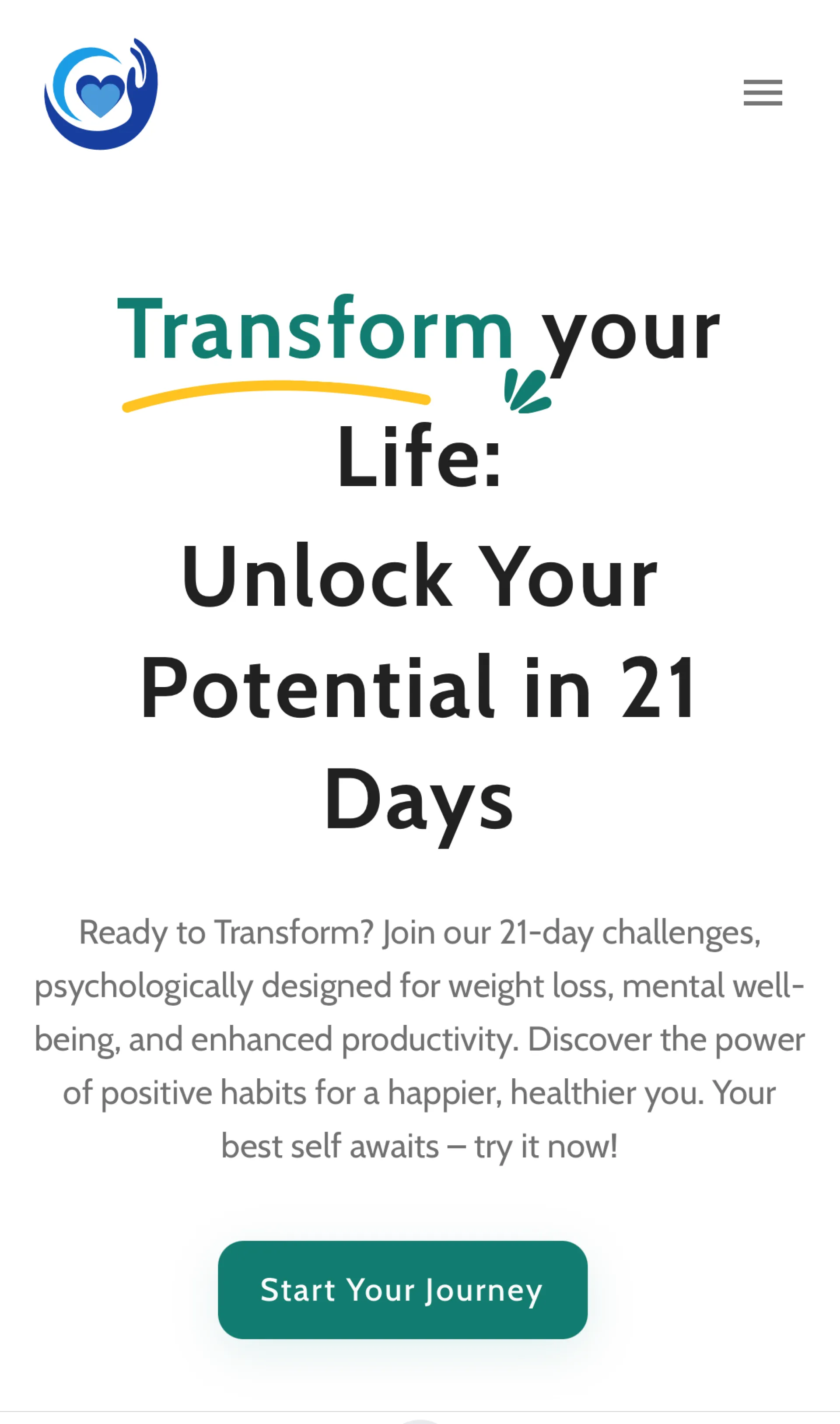
I reached 2 million impressions on Reddit.
One of the most important factors on Reddit is timing.
You need to submit your post when the most audience is online.
In most cases, it is when the US audience is online.
I have 8-hour differences between the USA. In previous times, I could write a post and wait till midnight.
Now, I solved this problem. You can schedule posts for the future (in weeks and even months from now).
I always focus on getting the maximum results.
How did I do it?
I reused the same post on different subreddits.
This way, I could double and triple my results. Just by submitting the same post to relevant subreddits.
You know what ?
I solved this problem too.
You can schedule a post and cross-post to different subreddits.
The last post that I submitted via this way got:
30k impressions (the same post)
50k impressions (the same post)
10k impressions (the same post)
Hey Huzzler community!
After watching 1000+ of you launch here, I've started noticing a common pattern among SaaS launches:
Month 1-6: Build incredible product ✅
Month 7: Launch on Huzzler and get great feedback
Month 8: "No customers.. Maybe I need more features?" 🤔
Month 12: Still struggling with real customers... 😰
Here's the thing, almost everyone in this community can build. You're all incredibly talented.
We try posting on Product Hunt, tweeting, building in public... but our acutal customers are not browsing these sites. They're busy doing their jobs at companies.
That's why I'm building Customer Engine: a systematic approach to getting customers where you get exact daily tasks to get your first B2B customers.
Instead of: "What should I do today to get customers?"
You get: "Send 8 LinkedIn requests to marketing managers using template #3"
And you can actually see what's actually working for other founders (with real numbers).
Question for you guys: What's your biggest problem after launching your product? Is it getting the first real customers (who are not founders themselves)?
Would love your thoughts!
Waitlist: customerengine.co

Every dev has an AI “assistant” in their editor now. LLMs are great for the day-to-day, but let’s be real: writing code is the fun part.
Code Review? Not so much.
So we had to ask: Can LLMs actually review PRs? Or do they just throw out generic suggestions that sound useful but don’t hold up in practice?
We ran a benchmark comparing Kody vs. LLMs (GPT & Claude) to see who really delivers meaningful code reviews. The early data makes one thing clear: they’re not the same.
⚠️ One thing before we dive in: this benchmark is a work in progress. We know the dataset is still small, but the goal is clear: push LLMs to their limits—and see where they break.
See what we found: https://kodus.io/en/benchmarking-code-reviews-kody-vs-raw-llms-gpt-claude/
Reach thousands of active founders looking for tools to solve their problems. Our Featured Product placement guarantees premium visibility with 7,458 weekly impressions for post ads (like you are reading right now).
Get direct access to your perfect target audience - people actively building, launching, and growing startups who are ready to invest in solutions like yours. Limited weekly slots available.
Reserve yours now at huzzler.so/advertise
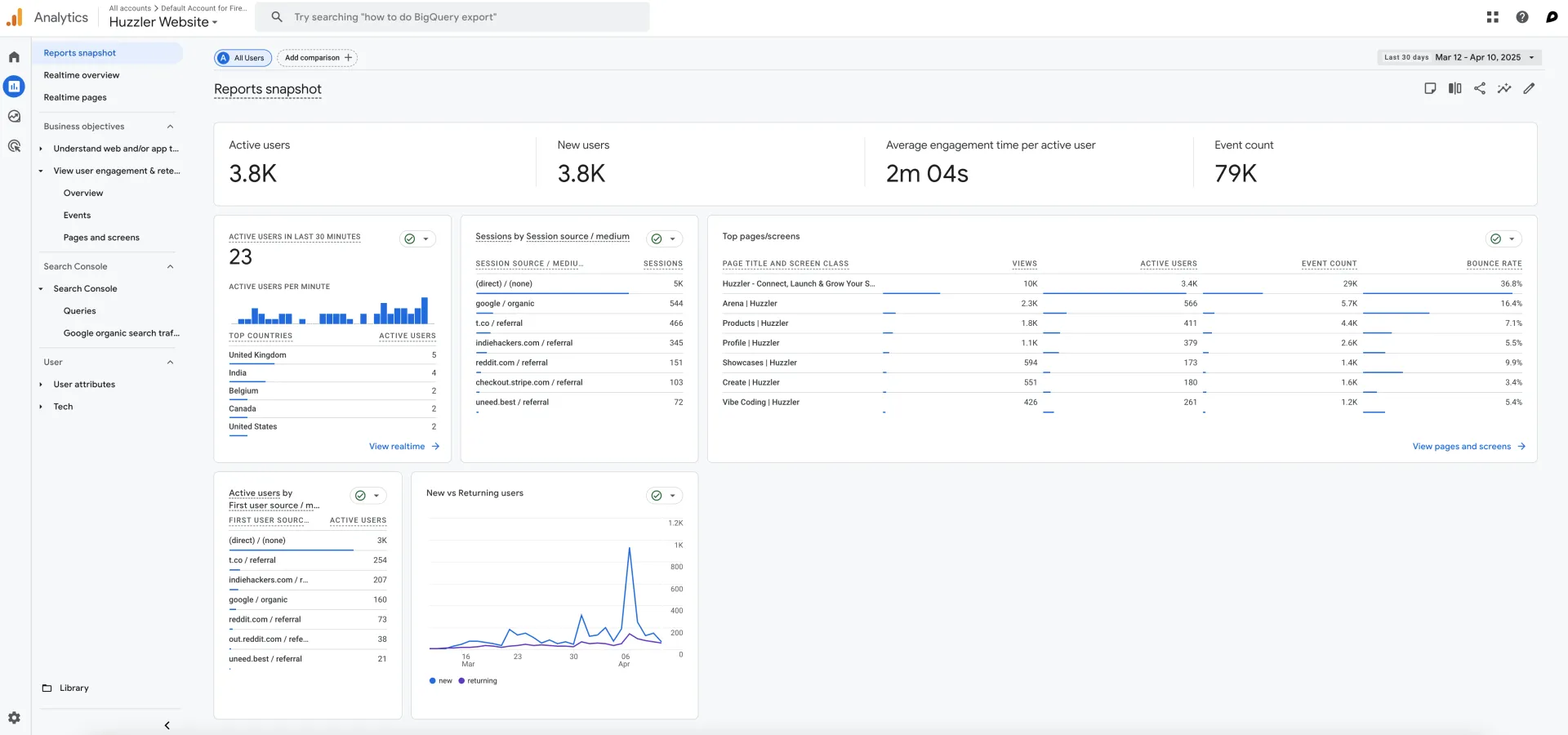
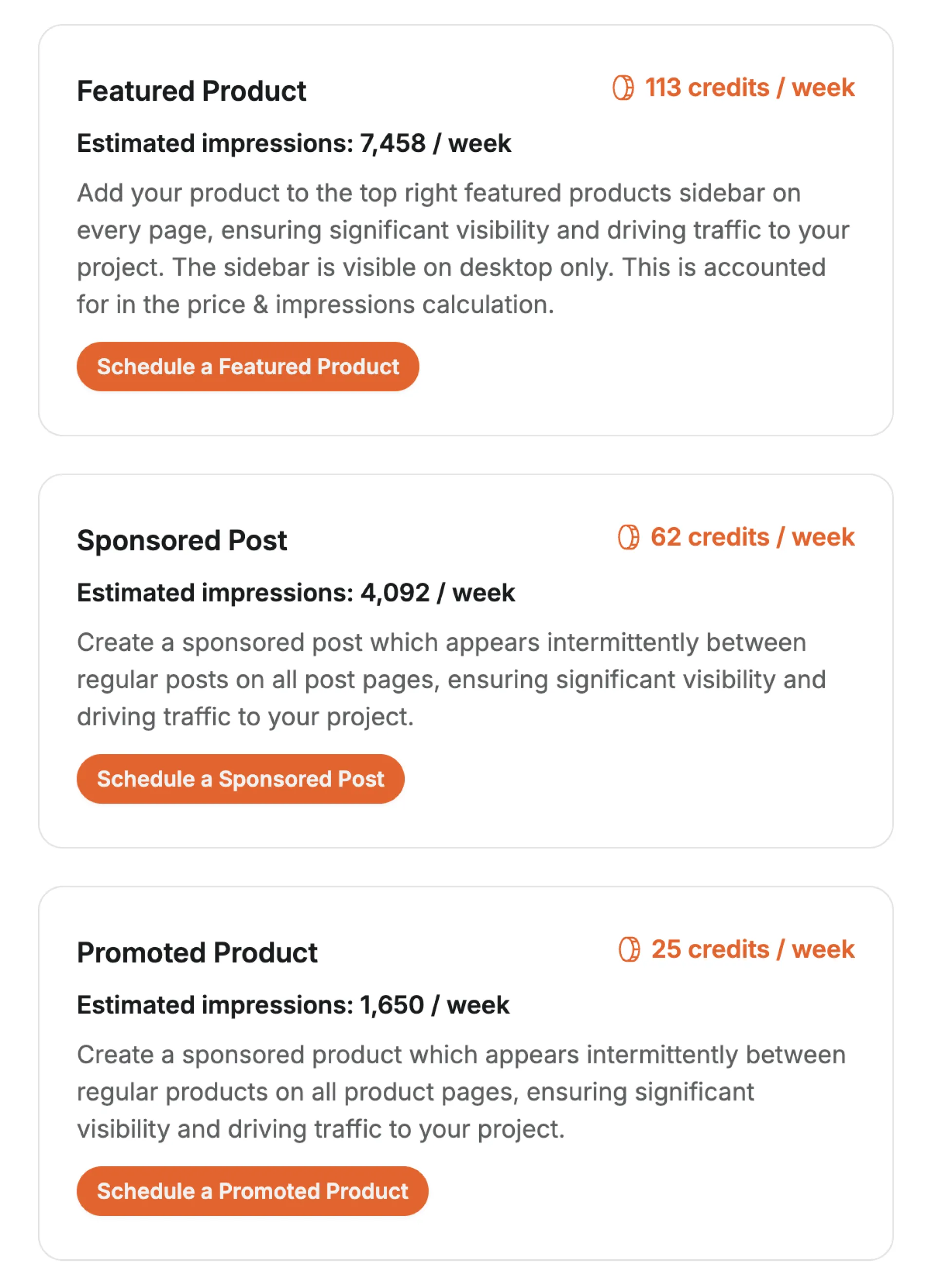
yopaGo let's you use your phone WhatsApp messages without touching your phone. yopaGo reads out your WhatsApp messages and you can cm decide to answer to messages with your voice. Stay connected and safe when you drive a car or a motorbike or when you ride your bike. Even great when you are jogging and want to stay up to date.

LLMs alone aren't great at reviewing code—they produce noisy, irrelevant, or even incorrect comments far too often.
We open-sourced Kodus, our AI-powered code review platform built specifically to address this problem. Instead of relying purely on GPT models, we use a deterministic, AST-based rule engine to provide precise, structured context directly to the LLM. The result is a dramatically reduced noise rate, fewer hallucinations, and comments you can actually trust (and merge).
A quick rundown:
- Hybrid approach (AST + GPT): Precise, deterministic context feeding into the LLM reduces false positives and irrelevant suggestions.
- Self-hostable & Open Source: Run on your own infra/cloud—no code leakage, no data privacy concerns.
- Customizable rule engine: Easily define and share context-specific review rules across your team and community.
We'd love your feedback, suggestions, or criticisms—especially if you've experienced frustration with purely GPT-based review tools.
I wanted to share something we've been pouring our hearts into. Our team has collectively spent over three decades in this industry, working alongside writers, reading thousands of scripts, and honestly... getting frustrated with the same recycled formulas Hollywood keeps pushing.
For the past 10 years, we've developed a methodology that's helped hundreds of writers find their unique voice and craft stories that actually stand out. Now, we're turning that approach into an actual tool called Script.Movie.
This isn't another "three-act structure" preacher or "character archetype" regurgitator. We built this because we genuinely love great writing and want to see more original voices break through.
What makes it different?
Instead of forcing your creativity into some producer's template, we've created a resource that adapts to YOUR writing style. Whether you're a complete beginner or a seasoned pro, the tool scales with you. It includes carefully selected examples from exceptional screenplays (not just the same five movies everyone references), and focuses on helping you develop your story in YOUR voice.
We're tired of seeing the same stories told the same ways. We're tired of formulaic advice that crushes what makes writers special. And we're definitely tired of tools that feel like they were designed by people who've never actually written anything meaningful.
I know this community gets bombarded with "revolutionary new writing tools" every other day, but we've been in the trenches with you. We're writers and industry veterans who just want to see better, more authentic stories get made.
Would love to hear your thoughts or answer any questions. And if you're interested in being an early adopter, let us know.
Have a great one
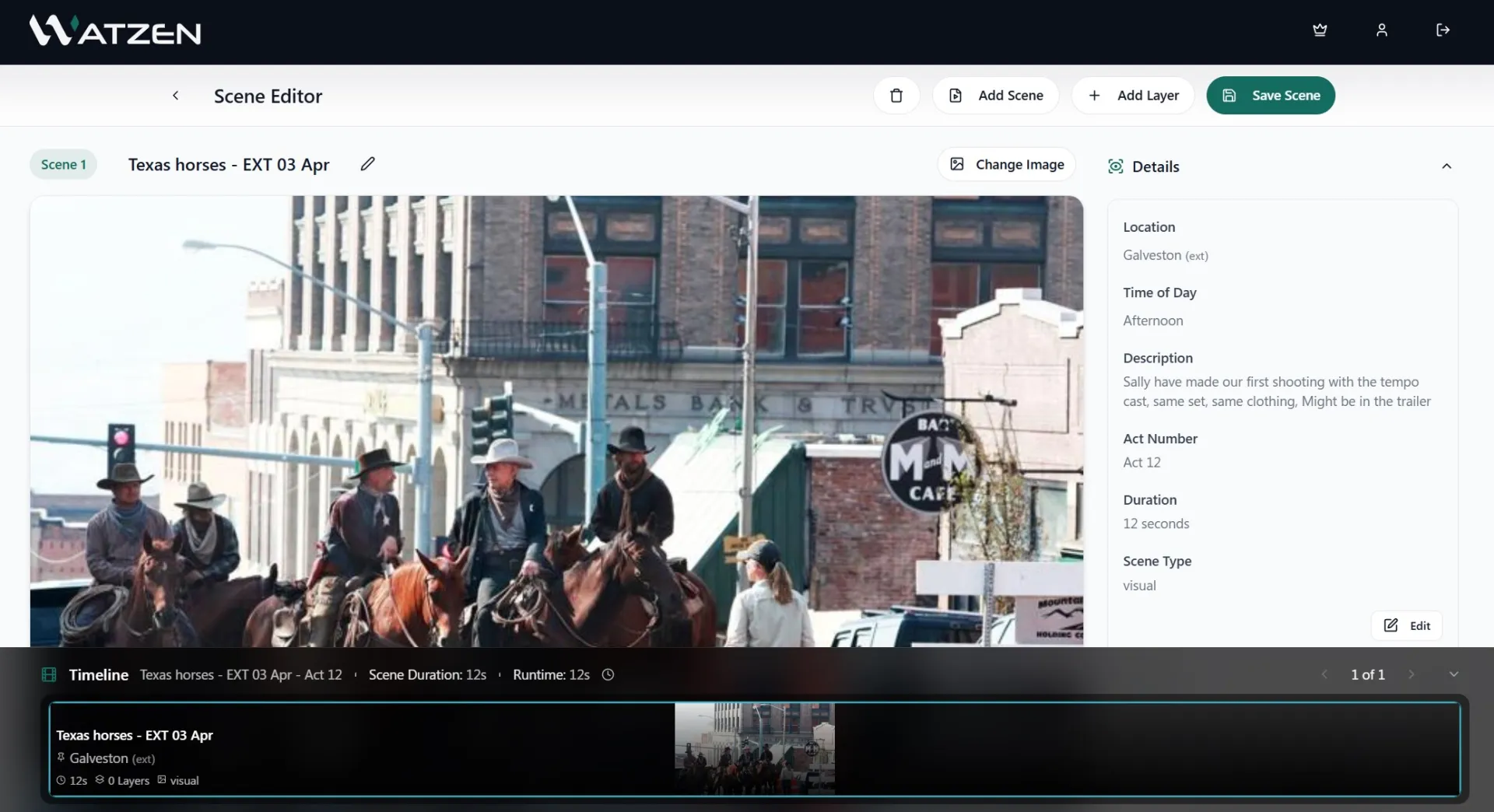
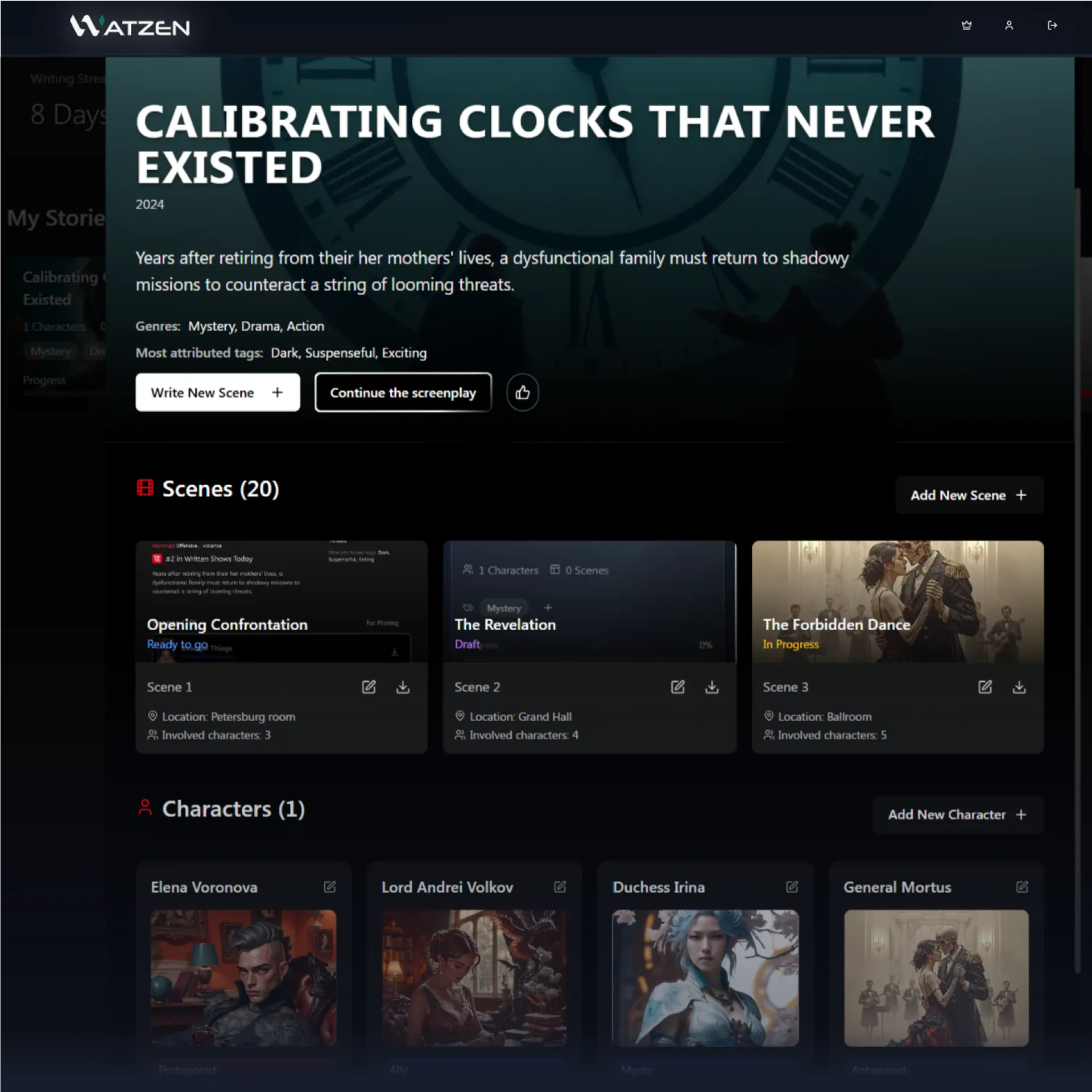
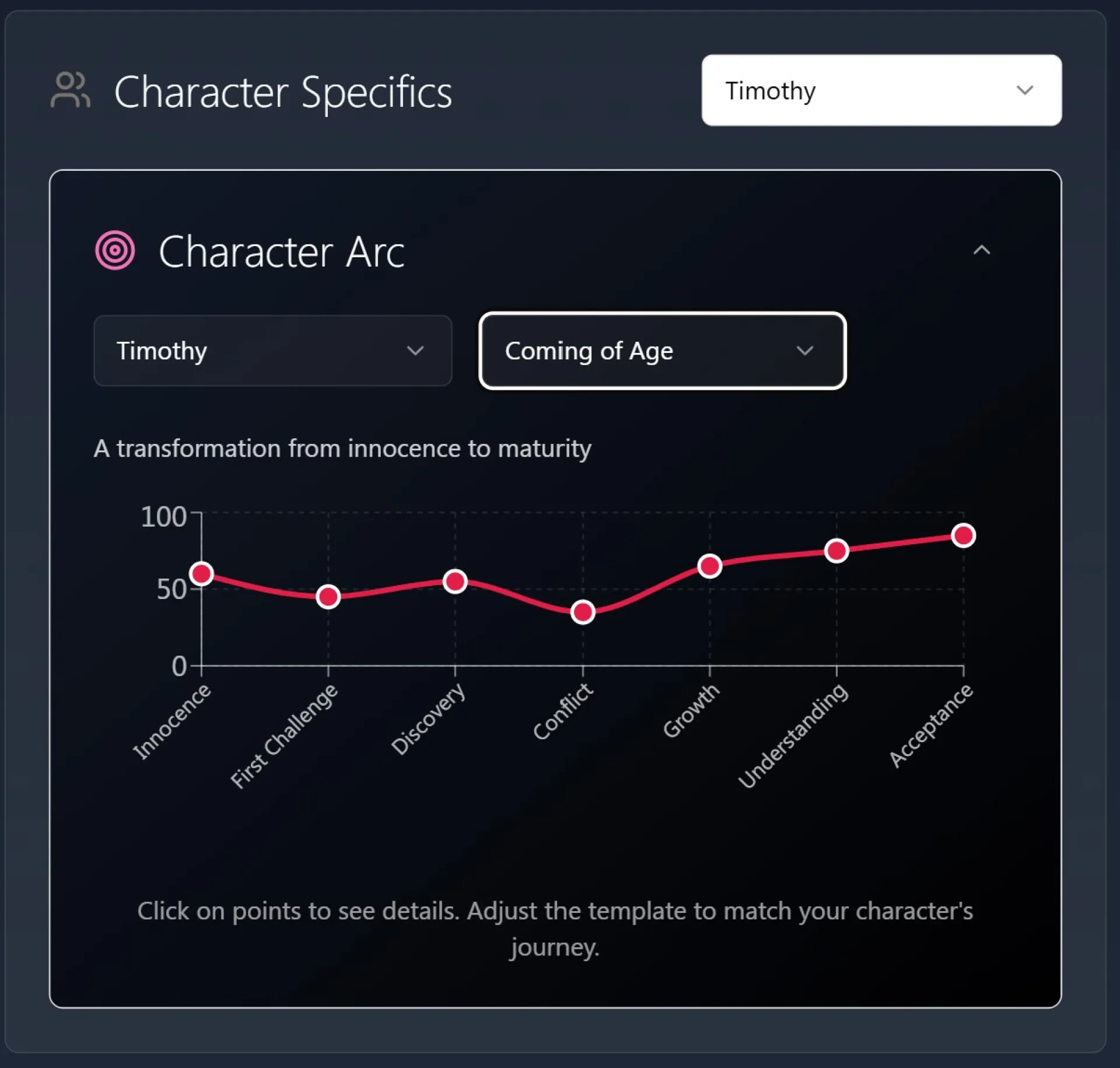
Hi my name is Shaquan Jones I’m the founder of Eden OS. It’s an AI OS that developers and consumers a like can build on or use to suite their needs. I’m building a community on Reddit: buildwitheden and YouTube: buildwitheden. My goal is to build Eden but also empower people with low resources to build software using AI. Please check me out on YouTube or Reddit!
I lead Product at Velocity. Our on-demand usability feedback is putting a stop to wasted human time by encouraging designers to first review with AI simulations. We are a team of ex-agency owners whose teams had a hand in building big mobile Apps for companies like Meetup, Soundcloud, Mubi, Glovo.
We, like many design, engineering and Product teams, were often in a position where evidence was weak and feedback was impossible to access, but we were still under pressure to deliver! Limited time, budgets and firewalls meant waiting weeks to iterate.
Now, in seconds, on-demand, you can challenge an AI on your app's designs just like in user testing sessions. Ask questions, then witness a simulation trying to 'use' connected images of your current or future app.
We are first launching as a Figma plugin to provide designers with 24/7 on-demand design feedback. We offer the earliest validation BEFORE code and BEFORE asking real humans.
Figma Plugin link: https://www.figma.com/community/plugin/1397952939678206595/ai-design-reviews-user-simulations-then-human-feedback-1min
Website Link:
Demo Video:
https://www.youtube.com/watch?v=qxWCQ1EIPPo
Would love to hear your feedback, thanks in advance 🙏
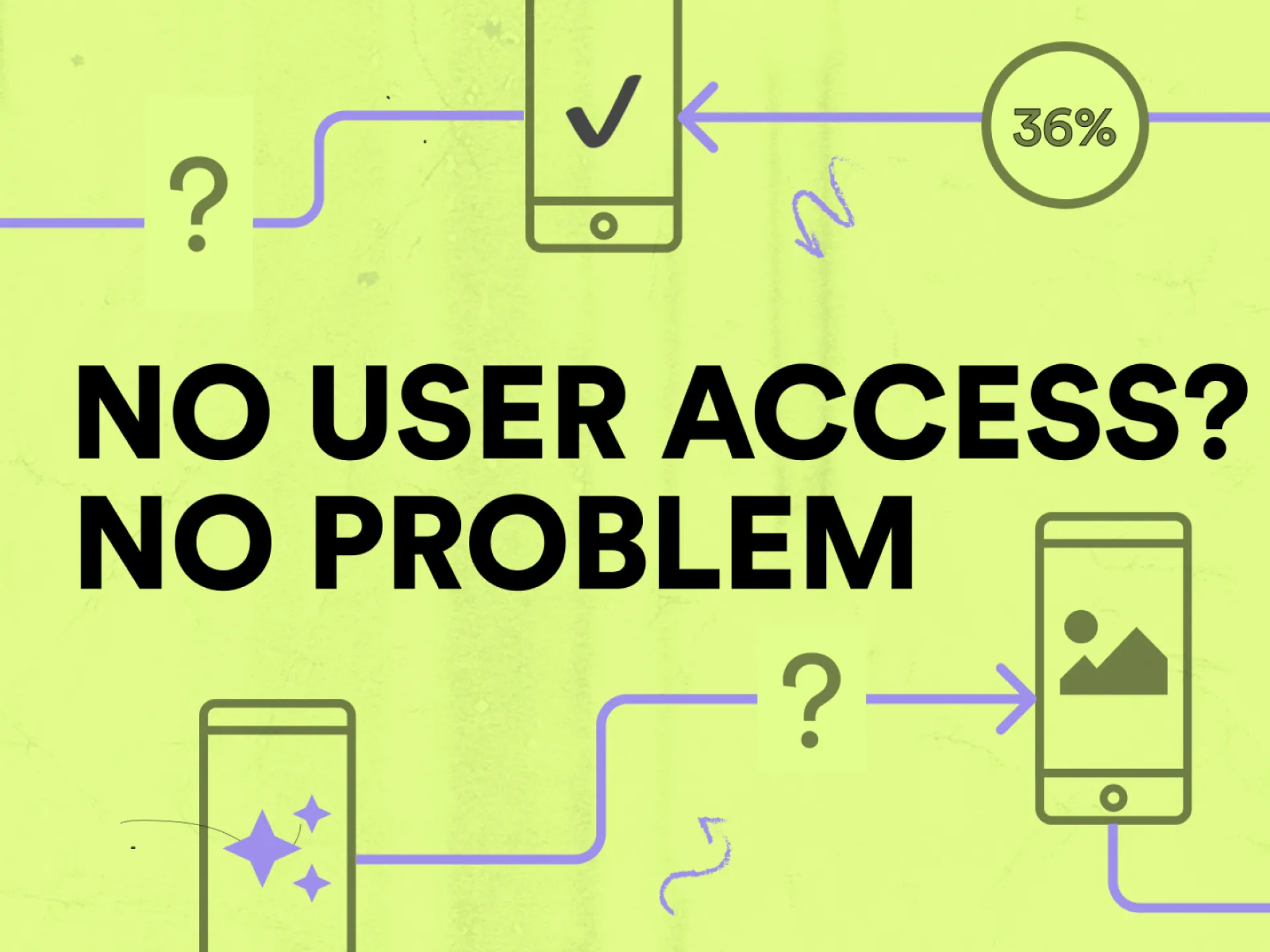
Hey Huzzler community!
After watching 1000+ of you launch here, I've started noticing a common pattern among SaaS launches:
Month 1-6: Build incredible product ✅
Month 7: Launch on Huzzler and get great feedback
Month 8: "No customers.. Maybe I need more features?" 🤔
Month 12: Still struggling with real customers... 😰
Here's the thing, almost everyone in this community can build. You're all incredibly talented.
We try posting on Product Hunt, tweeting, building in public... but our acutal customers are not browsing these sites. They're busy doing their jobs at companies.
That's why I'm building Customer Engine: a systematic approach to getting customers where you get exact daily tasks to get your first B2B customers.
Instead of: "What should I do today to get customers?"
You get: "Send 8 LinkedIn requests to marketing managers using template #3"
And you can actually see what's actually working for other founders (with real numbers).
Question for you guys: What's your biggest problem after launching your product? Is it getting the first real customers (who are not founders themselves)?
Would love your thoughts!
Waitlist: customerengine.co

Hey everyone,
Excited to share a project I've been working on called AddCal!
What I Built:
AddCal is a tool designed to tackle the common frustration of sharing an event and ensuring people can easily add it to their specific calendar system (like Google Calendar, Outlook Calendar, Apple Calendar, etc.). Instead of just sending details and hoping they manually input it correctly, AddCal aims to streamline that process.
The core idea is to provide a simple, universal way for users to add events they receive to their preferred calendar with minimal fuss.
How I Built It:
I developed AddCal using Laravel for the robust backend logic and API handling. On the frontend, I used Vue.js to create interactive user interface components. Styling was handled efficiently using Tailwind CSS, allowing for rapid development of a custom look and feel.
To seamlessly connect the Laravel backend with the Vue.js frontend without building a separate REST API, I leveraged Inertia.js. This setup provides a modern, single-page application experience while allowing me to work primarily within the Laravel ecosystem.
A key part of the development involved generating the correct formats ([e.g., .ics files]) compatible with the major calendar platforms. Handling time zones correctly and ensuring cross-calendar compatibility were also interesting challenges during the build.
Achievements & What I Learned:
Building AddCal has been a fantastic learning experience, especially in leveraging the synergy between Laravel, Vue, and Inertia for a cohesive development workflow [or mention another specific skill area you improved]. The main achievement for me is creating a tool that solves a tangible annoyance I've personally experienced and seeing it work reliably across different calendar types.
Feedback Welcome!
I'm keen to hear your thoughts! Any constructive feedback on the concept, potential features you'd find useful, or technical implementation suggestions would be greatly appreciated.
Thanks for checking it out! Looking forward to contributing and learning together in this community.
#showcases #laravel #vuejs #tailwindcss #inertiajs #productivity #webdev
After years of collecting resources and building side projects, I launched my first product: unarkhive.com 🚀
A clean, fast, and constantly evolving archive of tools, apps, and inspiration for developers, designers, and makers.
No monetization. No popups. Just quality content that fuels creativity.
Built with Next.js, Tailwind CSS, and a love for minimal UX.
This is not the destination—it’s the beginning of a longer journey to ship, learn, and grow.
Feedback is always welcome. Let’s keep building. 🙌
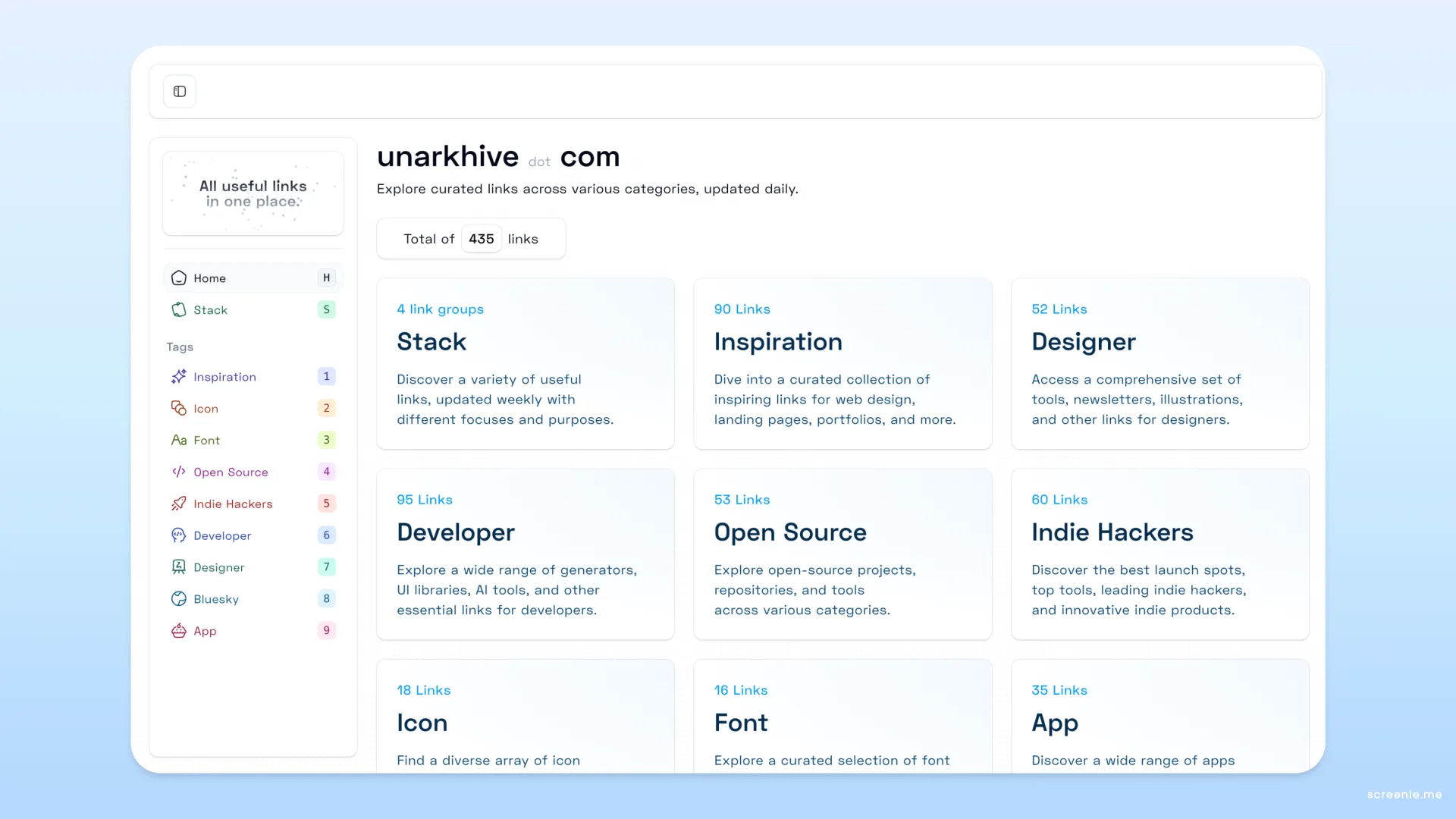
Hi,
I created my product to solve my own problem: writing blog posts. The idea of doing keyword research, planning, outlining, drafting, etc, etc, etc drives me crazy. As a builder, I'm not comfortable writing posts.
To fix my own problem, I launched https://owlendar.com
I've seen many people talking about how this can affect SEO negatively in some cases, as Google sees AI content creation as a warning sign. Well, Owlendar have published 30 articles for one of my websites so far and all good. The SEO is picking up.
How do you feel about AI blog posts? Do you want to give Owlendar a try?
Charty AI is a powerful mobile application that uses advanced artificial intelligence to analyze price charts for any financial instrument — including stocks, cryptocurrencies, indices, ETFs, and commodities. It transforms visual chart data into human-readable reports, helping traders and investors of all levels make smarter, faster decisions.
Whether you’re a beginner who struggles with technical indicators or a pro looking for a second opinion, Charty AI acts as your personal chart analyst — right in your pocket.
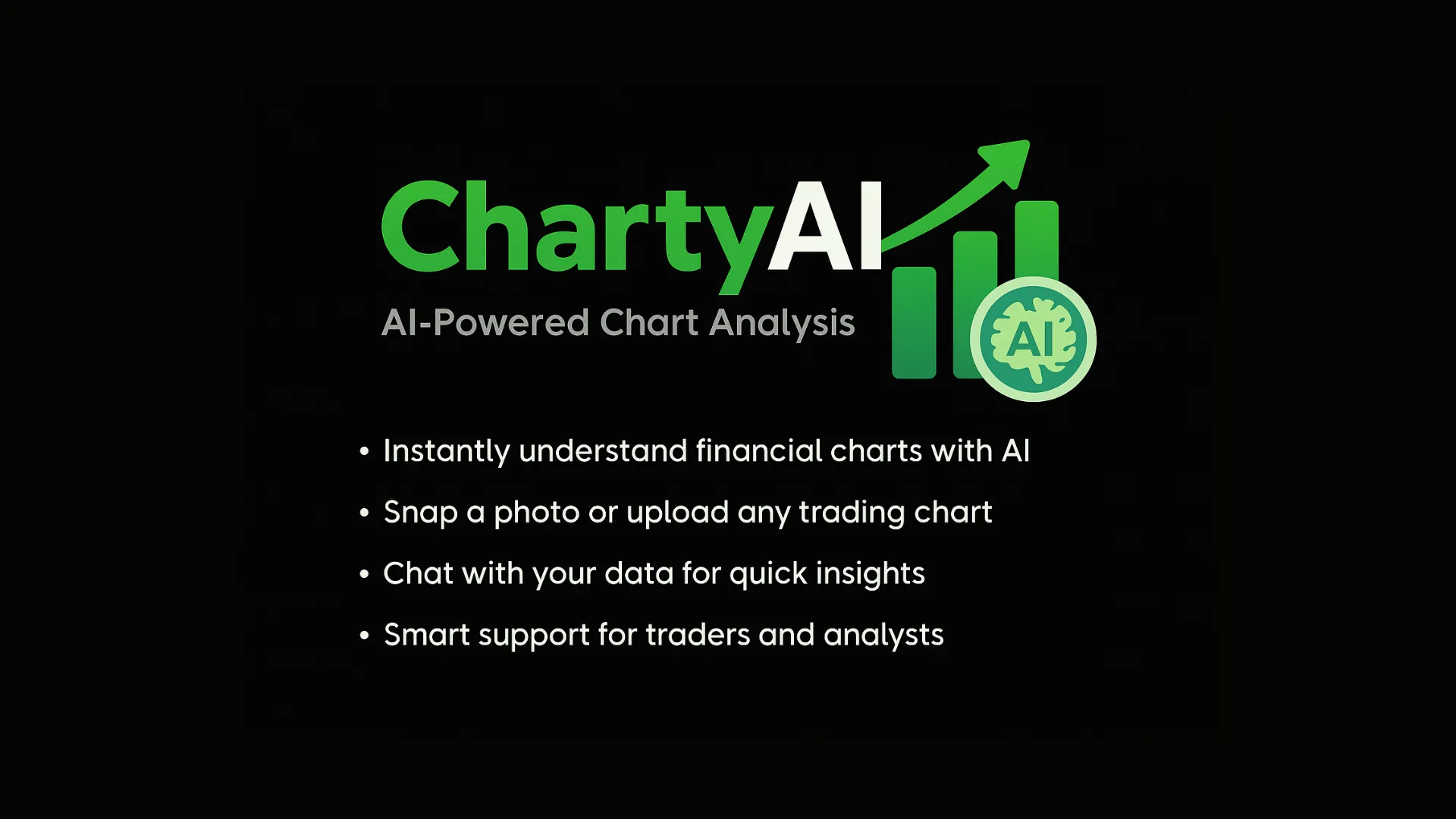
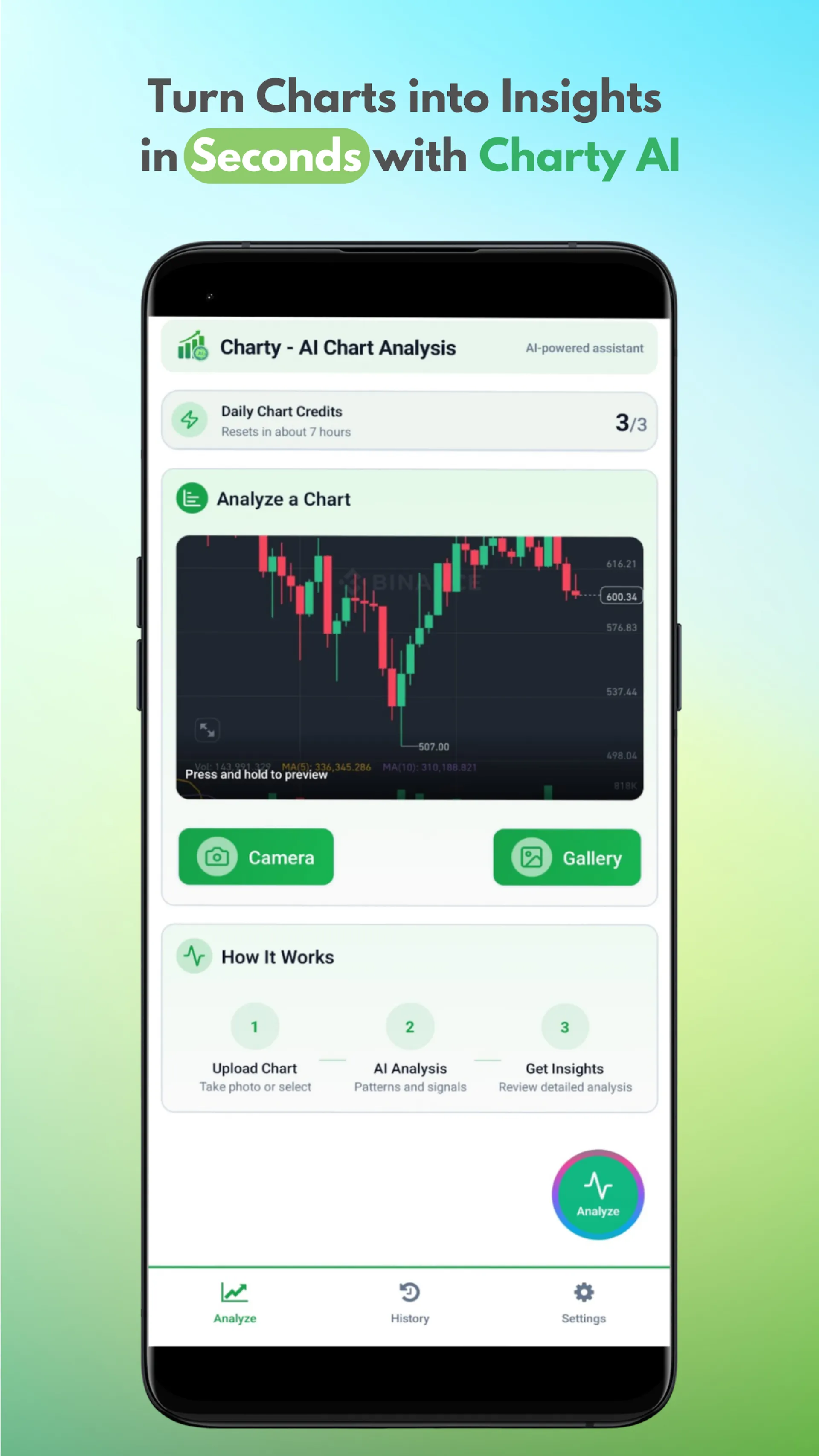
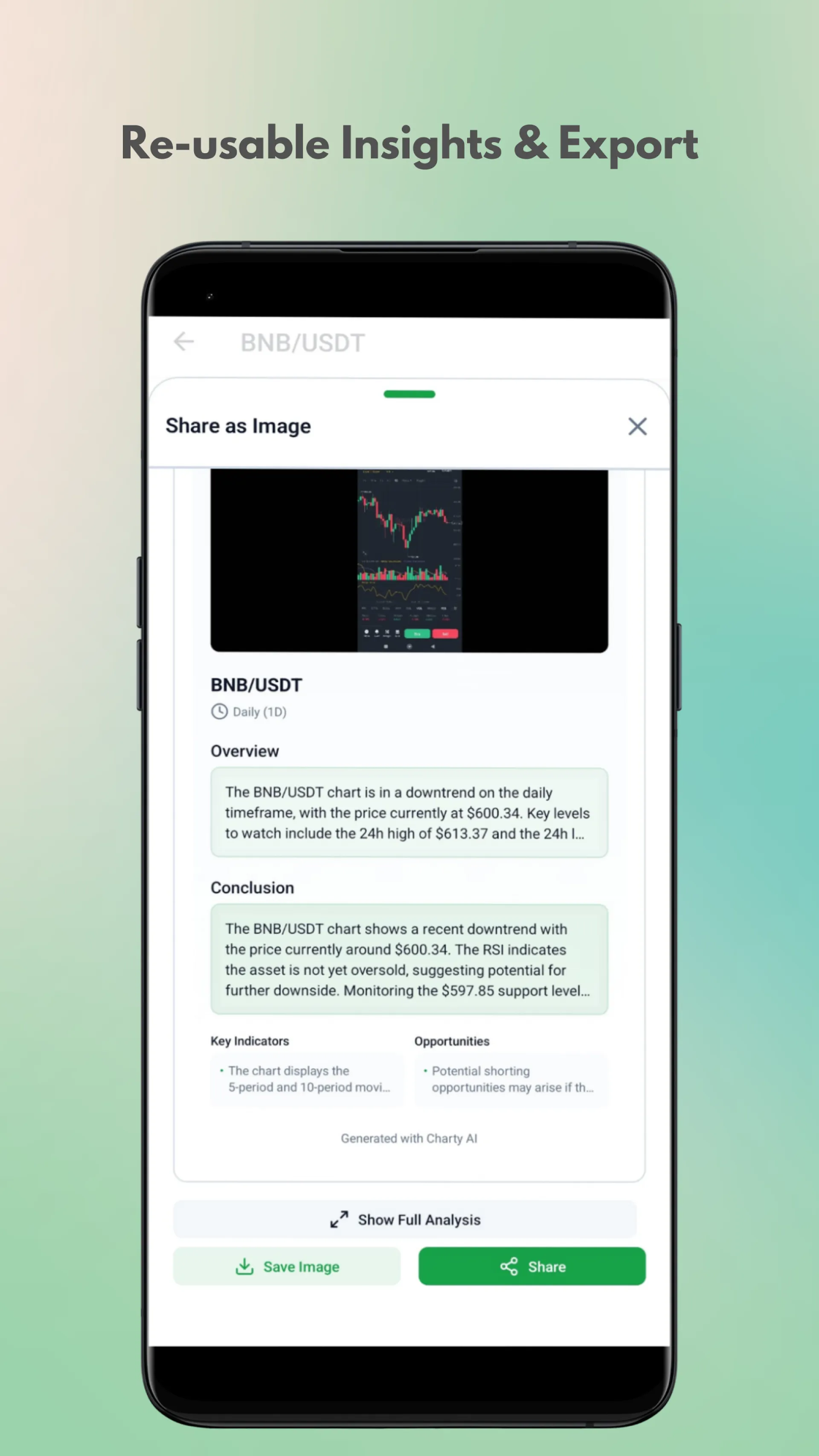
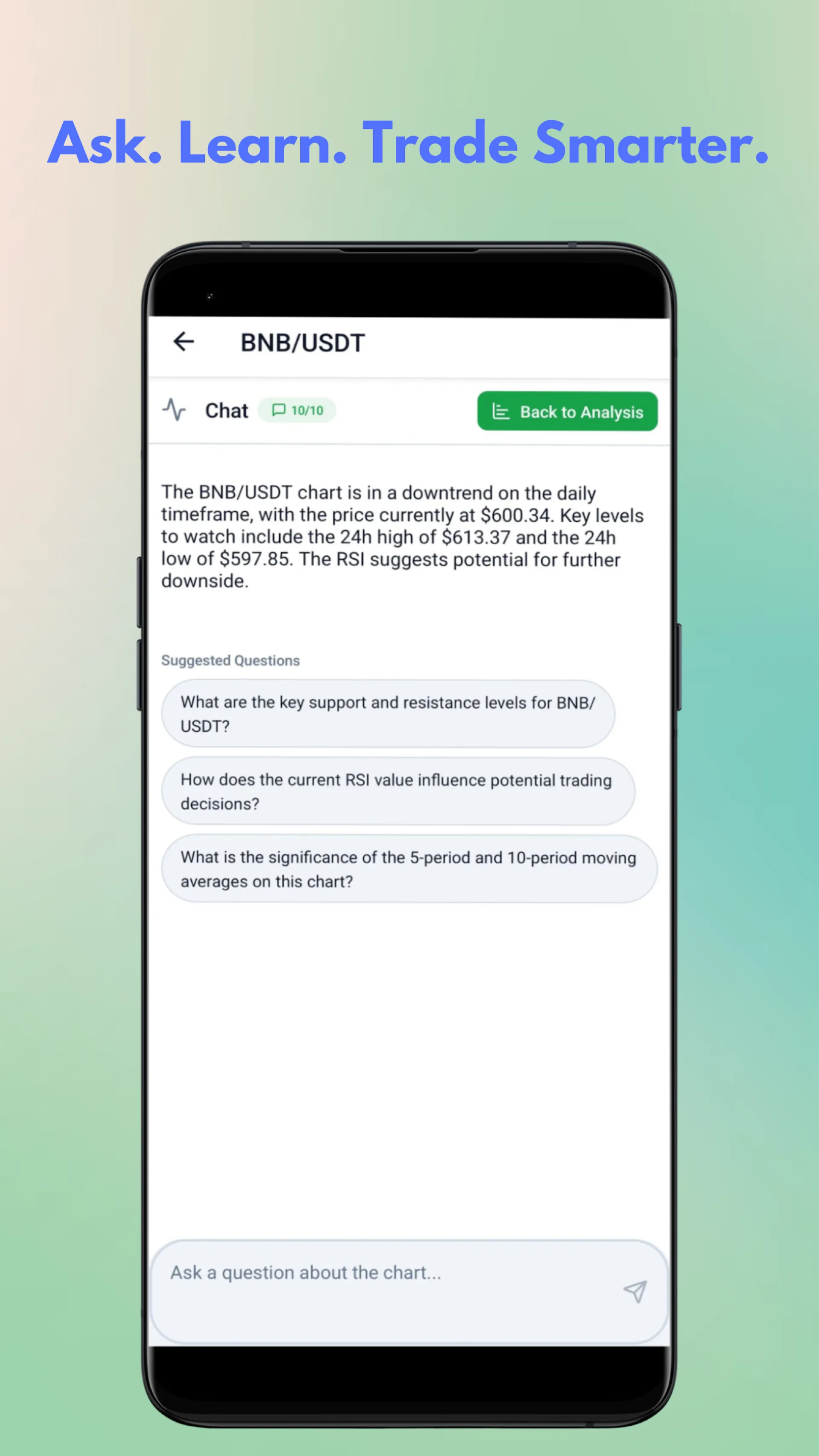
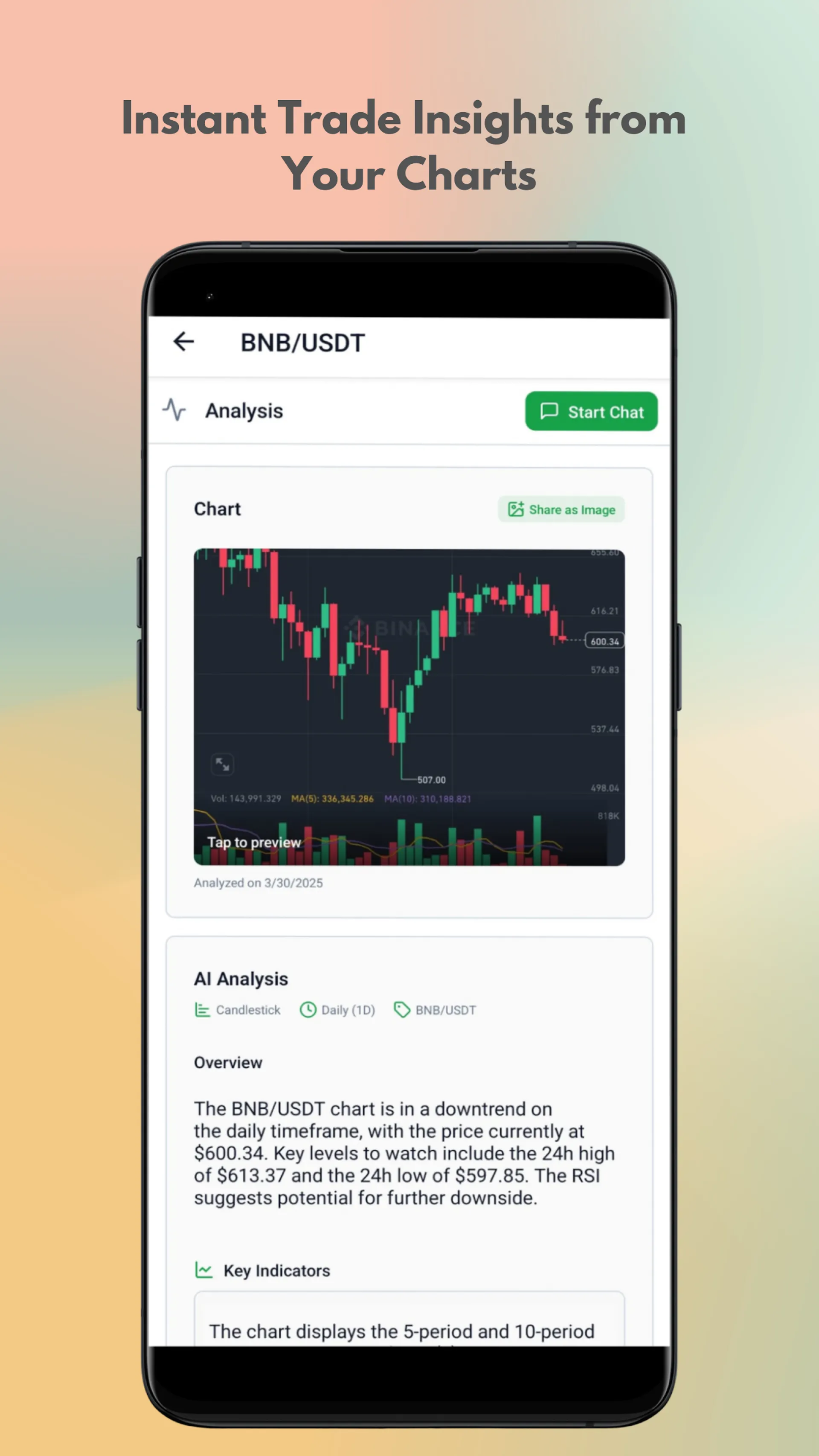
Hey everyone! 👋
I’m excited to share my latest project: ToneCraft AI – a free tool that intelligently transforms the tone of your text while preserving its meaning.
🛠️ What I built:ToneCraft AI is a web app that helps users rewrite their content in different tones such as:
- ✅ Professional
- ✅ Friendly
- ✅ Formal
- ✅ Casual
- ✅ Persuasive
It’s ideal for emails, social media posts, job applications, and more. Whether you're a marketer, creator, or just someone who wants to sound more polished, it can help your writing hit the right note.
⚙️ How it works:- Built with React, Tailwind CSS, Firebase Auth, and Node.js
- Integrated with OpenAI to power smart tone rewriting
- Hosted on Replit, making it super accessible
- Users get 5 free tone conversions without login, then can sign up for unlimited access – still 100% free
We all write a lot – but not always with the right tone. I wanted to create something that helps people communicate better, especially in professional and digital spaces. No fluff, no paywalls.
Would love for you to try it and let me know your thoughts or suggestions!
Thanks for reading 🙌
Fauzia Luqman
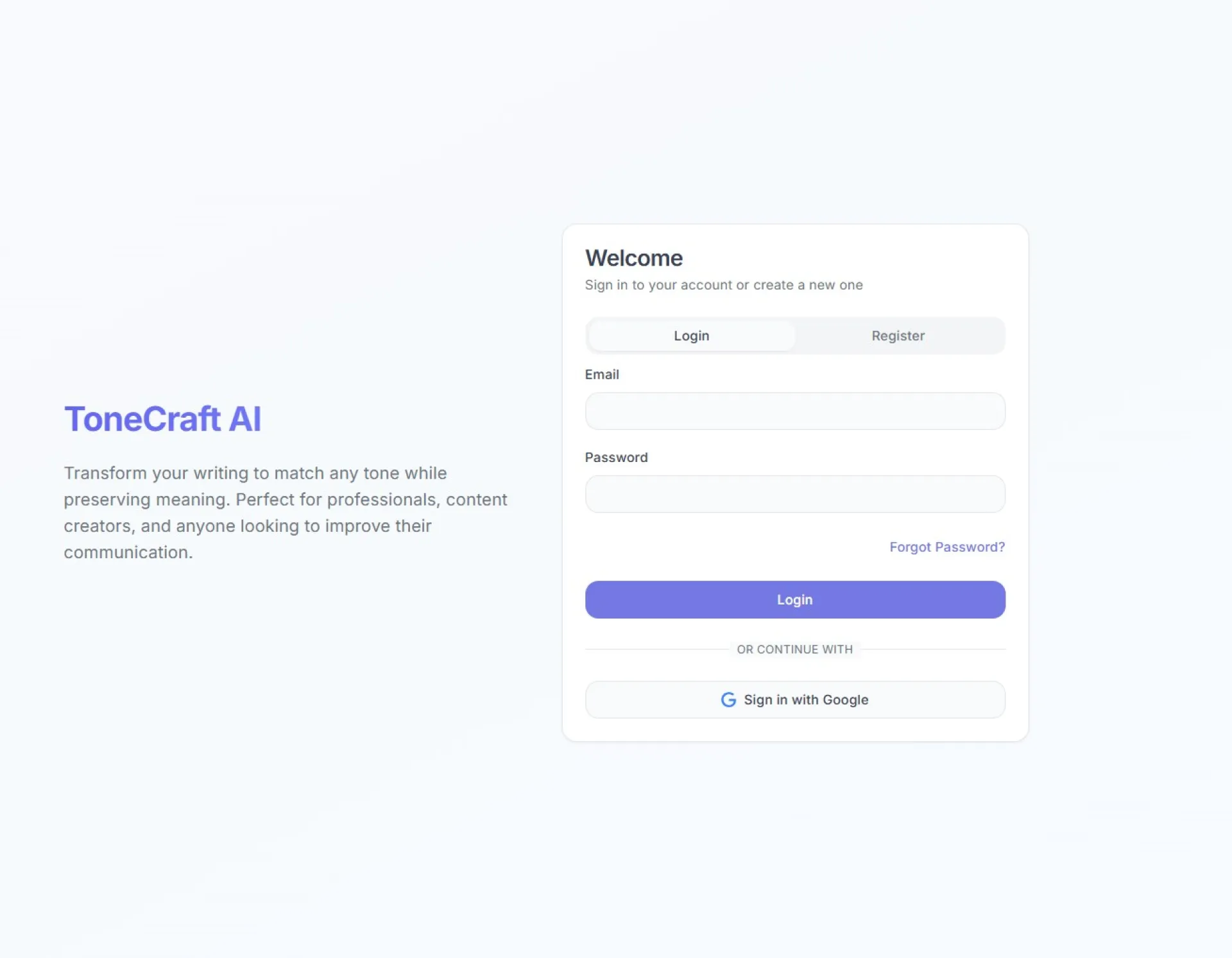
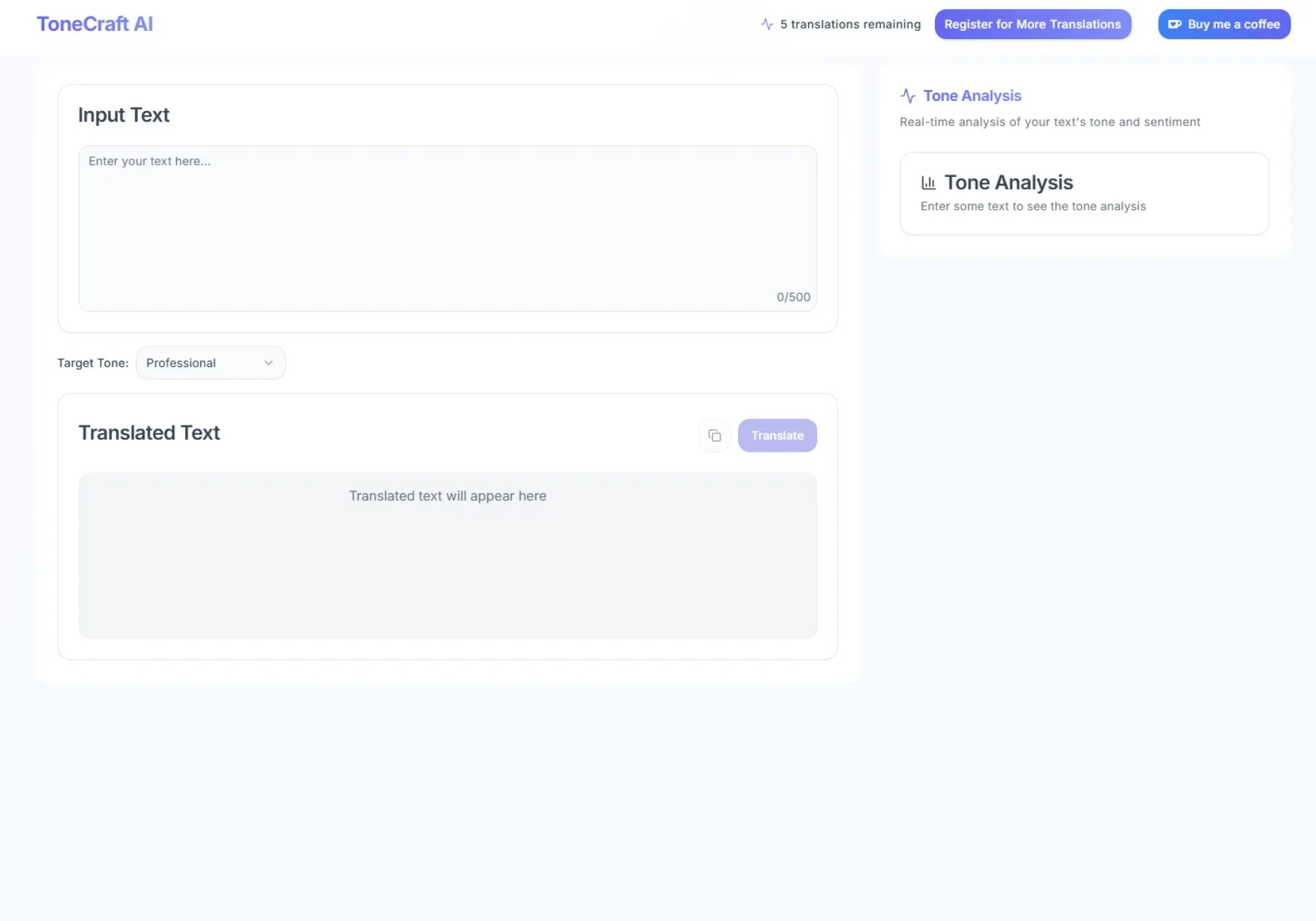

I came across a conversation between two developers discussing how frustrating it was to deal with Stripe integration on existing support platforms. For creators in India, especially those relying on UPI, the experience felt unnecessarily complex—and sometimes, just broken.
What stood out even more was the discomfort around platform commissions. Support, in its true sense, isn’t supposed to feel like a cut is being taken from appreciation.
That’s when the idea took shape.
This project BuyMeAChai was built to address those specific friction points:
No third-party payment gateways, no hidden deductions, and no complex onboarding. Just a simple, direct way to receive support using UPI, with a familiar, creator-first experience.
It’s not trying to be a disruptor. It’s trying to be simpler.
More aligned with how we already share value with each other here.
If you’re curious, feel free to check it out.
And if you do, I’d genuinely appreciate hearing what you think—good, bad, or in between.
I was casually scrolling where I came across a conversation between two developers discussing the issues with stripe on buymeacoffee. I thought yes, it's a problem which I can solve.
Additionally, people were also not very intrigued by the idea of commission which buymeacoffee or similar products were charging.
So here we are, presenting buymeachai, Buy Me A Chai is a heartfelt platform that lets developers, creators and side hustlers receive support as easily as sharing a cup of chai—with zero fees and instant payouts. Designed for India’s digital economy, it removes all friction with one-click UPI payments, customizable pages, and a warm, creator-friendly experience.
Do try buymeachai and let me know in the comments what is your honest opinion about it?
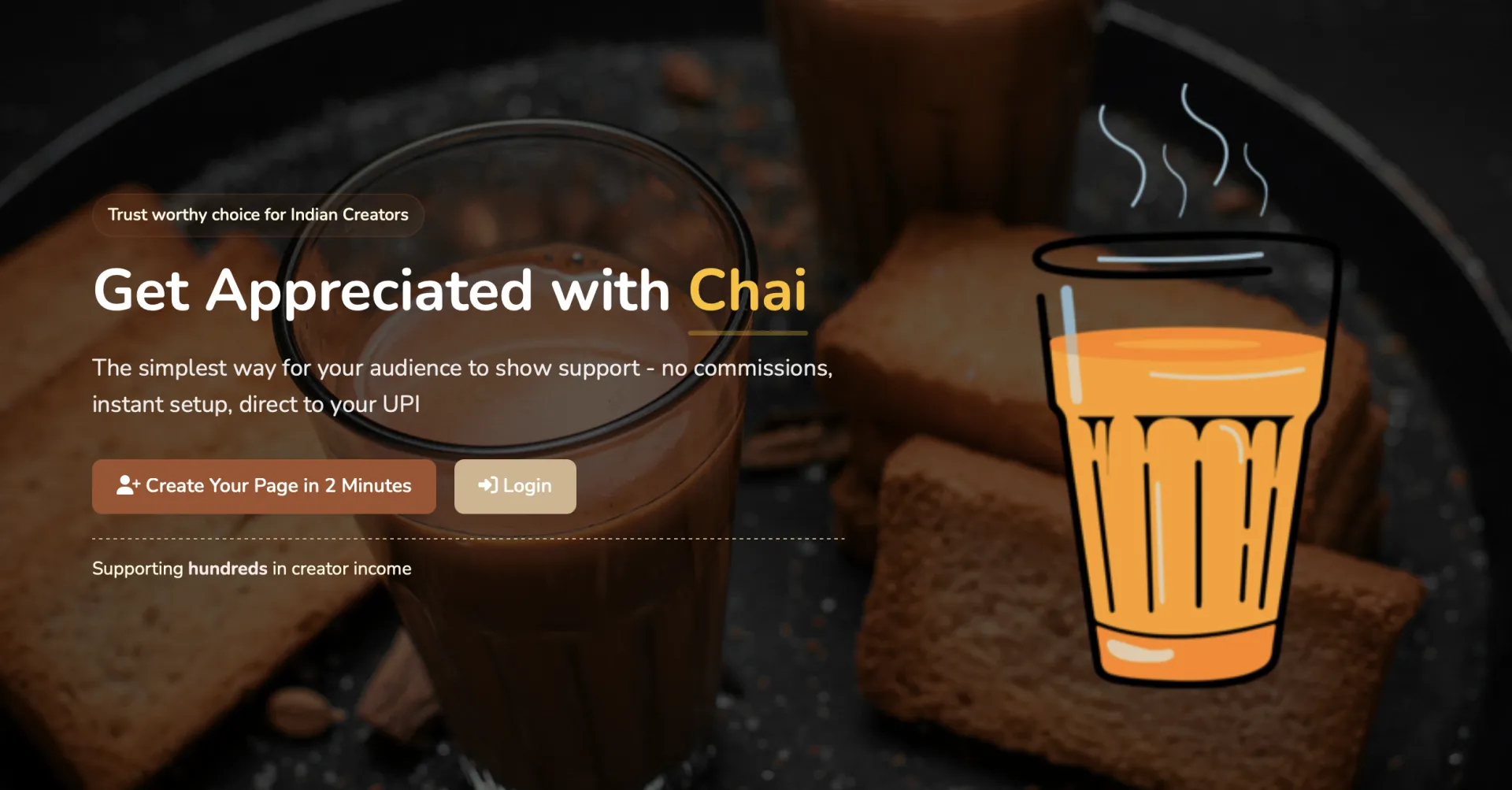
Hey Huzzler community!
After watching 1000+ of you launch here, I've started noticing a common pattern among SaaS launches:
Month 1-6: Build incredible product ✅
Month 7: Launch on Huzzler and get great feedback
Month 8: "No customers.. Maybe I need more features?" 🤔
Month 12: Still struggling with real customers... 😰
Here's the thing, almost everyone in this community can build. You're all incredibly talented.
We try posting on Product Hunt, tweeting, building in public... but our acutal customers are not browsing these sites. They're busy doing their jobs at companies.
That's why I'm building Customer Engine: a systematic approach to getting customers where you get exact daily tasks to get your first B2B customers.
Instead of: "What should I do today to get customers?"
You get: "Send 8 LinkedIn requests to marketing managers using template #3"
And you can actually see what's actually working for other founders (with real numbers).
Question for you guys: What's your biggest problem after launching your product? Is it getting the first real customers (who are not founders themselves)?
Would love your thoughts!
Waitlist: customerengine.co

We're thrilled to announce that after months of dedication and development, the PeakRoutine website has officially launched!
Why did we build this?
Because understanding your health data shouldn't require a medical degree.
Many of us track our metrics—whether it's glucose levels from a CGM, sleep patterns, or daily activity—but making sense of this information and knowing how to act on it is where most people get stuck.
PeakRoutine bridges this gap. Our AI-powered health coach analyzes your personal health data and crafts customized routines that actually work for your unique body and lifestyle. No more generic advice or wondering why your glucose spiked after that "healthy" meal.
Visit us at https://peakroutine.netlify.app/to discover how PeakRoutine can transform your relationship with your health data into actionable, personalized wellness routines.
📣 Would Love Your Feedback!
Or explore the idea behind it: https://www.reddit.com/r/PeakRoutine/
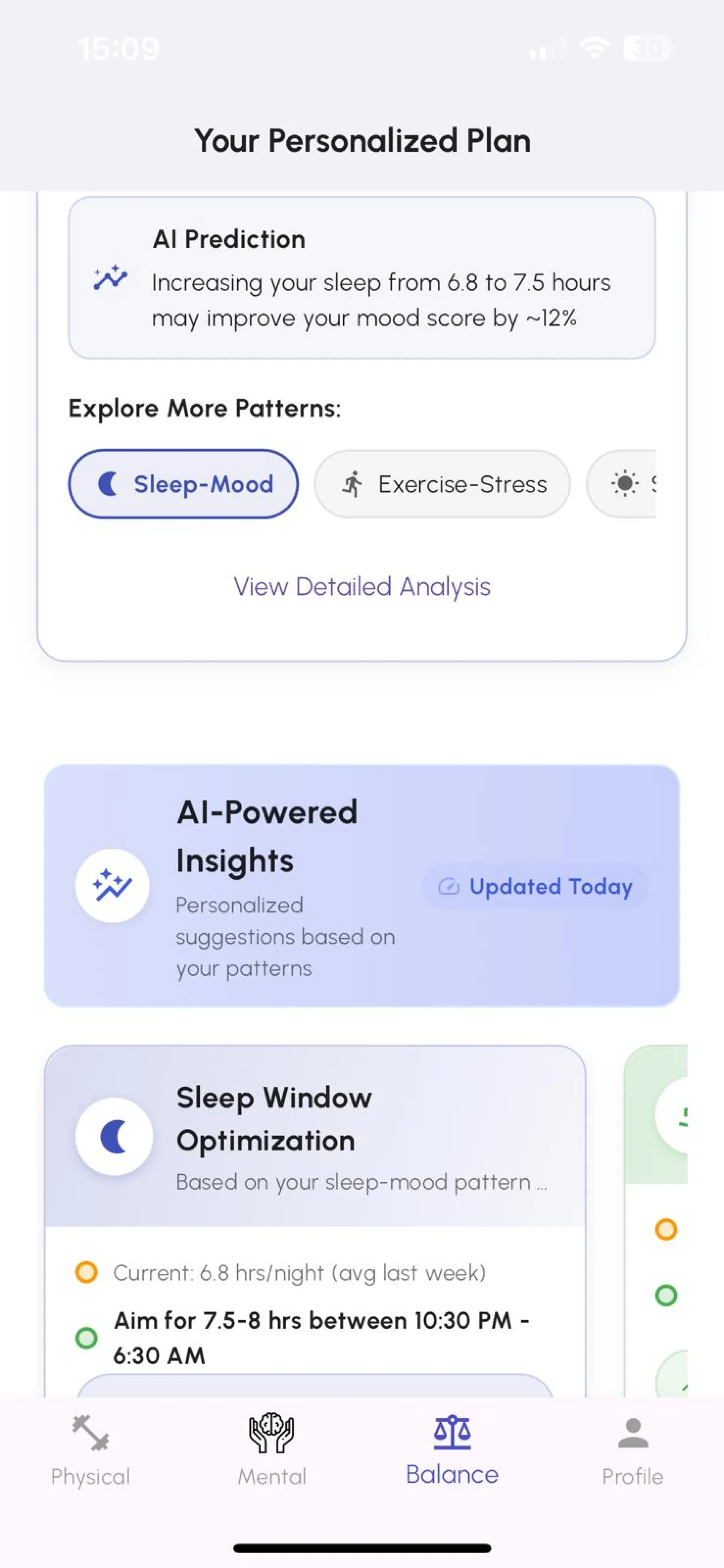
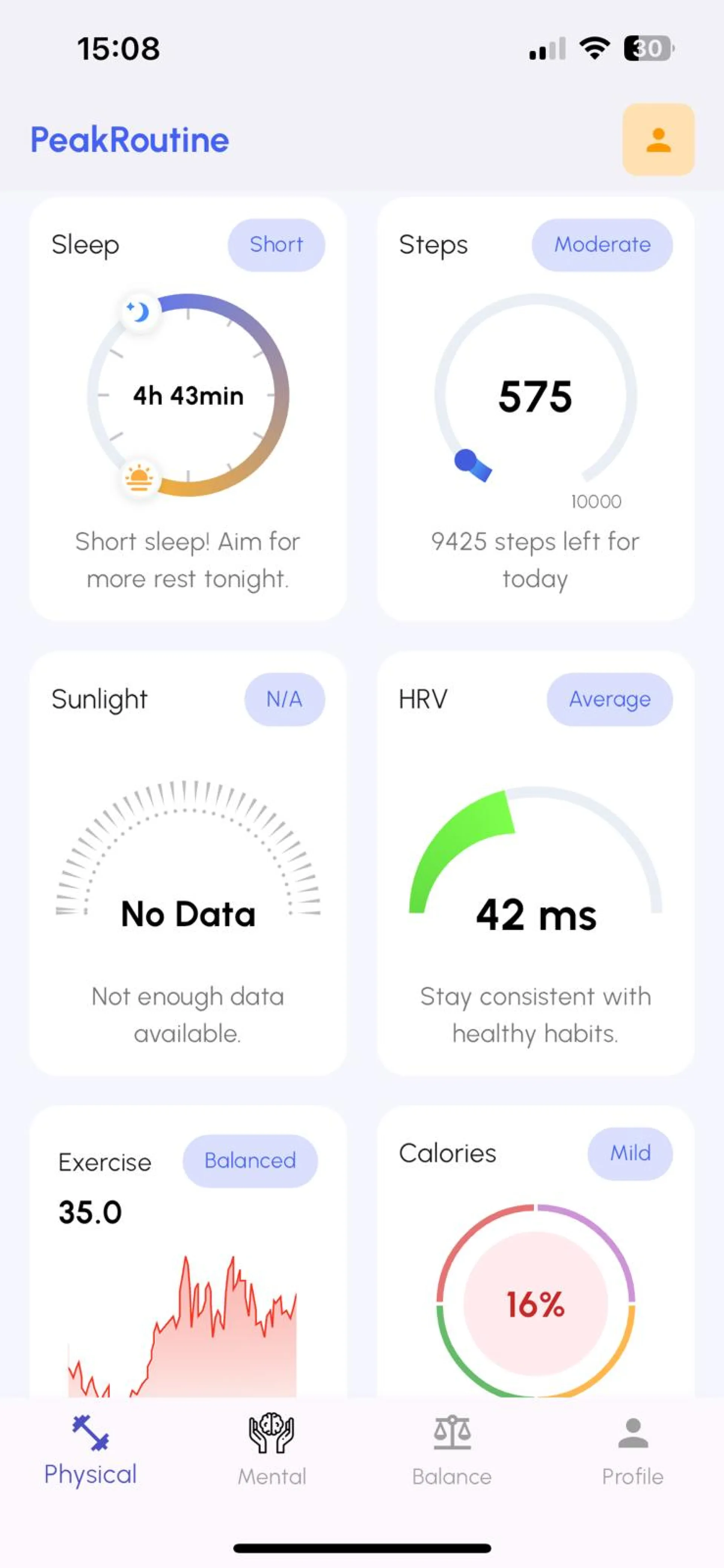
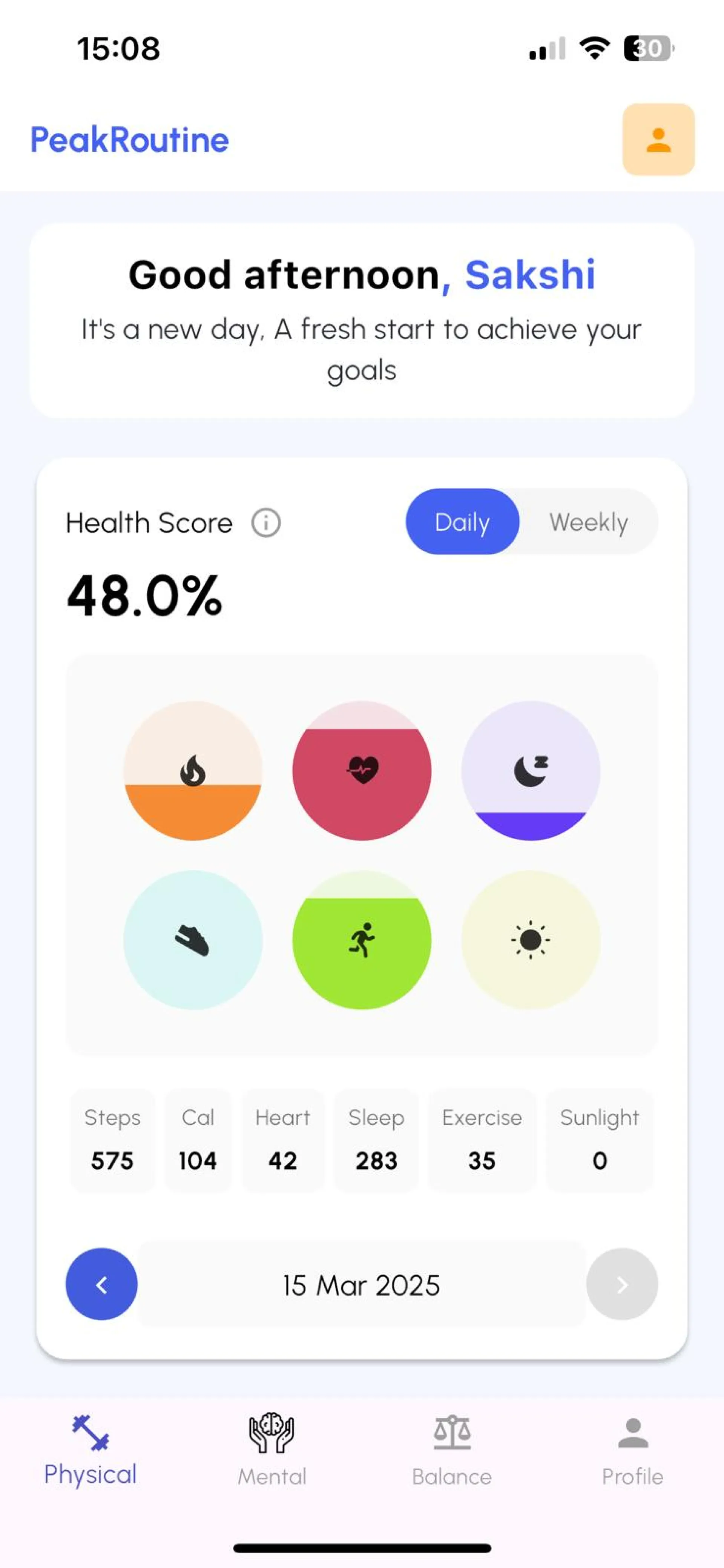
Hello all! I’m co-founder of Deadline Bar. We’re a caffeinated energy bar for busy professionals who are physically active.
R&D was a long road but we’re nearing the end and are spending our time now trying to build preorders. We’re reaching out to retailers we believe would be a good fit for us like Whole Foods, Sprouts and Wegmans.
We’re a few months from launch and are getting the word out there that we’re coming soon! Come check us out and tell us what you think and feel free to ask anything.

Hey everyone! 👋
I wanted to share the marketing strategy we've been testing for our project, Gitdocs AI, and open the floor for feedback or similar experiences.
We’re building a tool that helps developers auto-generate high-quality README files using AI, based on the actual content of their GitHub repos. But instead of going heavy on paid ads or traditional promotion, we’re trying a slower, more sustainable path:
Our Current Strategy:- Community-first mindset: We’ve been active in open-source and dev forums, not promoting the tool, just genuinely helping folks write better docs.
- Content > Ads: We’ve started a blog + mini-guides (like “How to structure a great README”) to provide value without selling anything.
- Dogfooding: Every update we make to the tool is something we document and share transparently on Twitter/LinkedIn, focusing on what we’re learning.
- Feedback loop: Early testers are shaping the roadmap—this has led to more organic interest than we expected.
- Cold outreach via LinkedIn (even thoughtful messages) mostly felt inorganic.
- Reddit can be great, but we had one post flagged—even though it wasn’t promo—so we're being extra cautious now.
Would love to hear from others working on dev tools or bootstrapping products:
🧠 What has worked for you in building awareness authentically?
Let’s make this thread a goldmine for early-stage marketing ideas that don’t rely on ads or spam 🙌
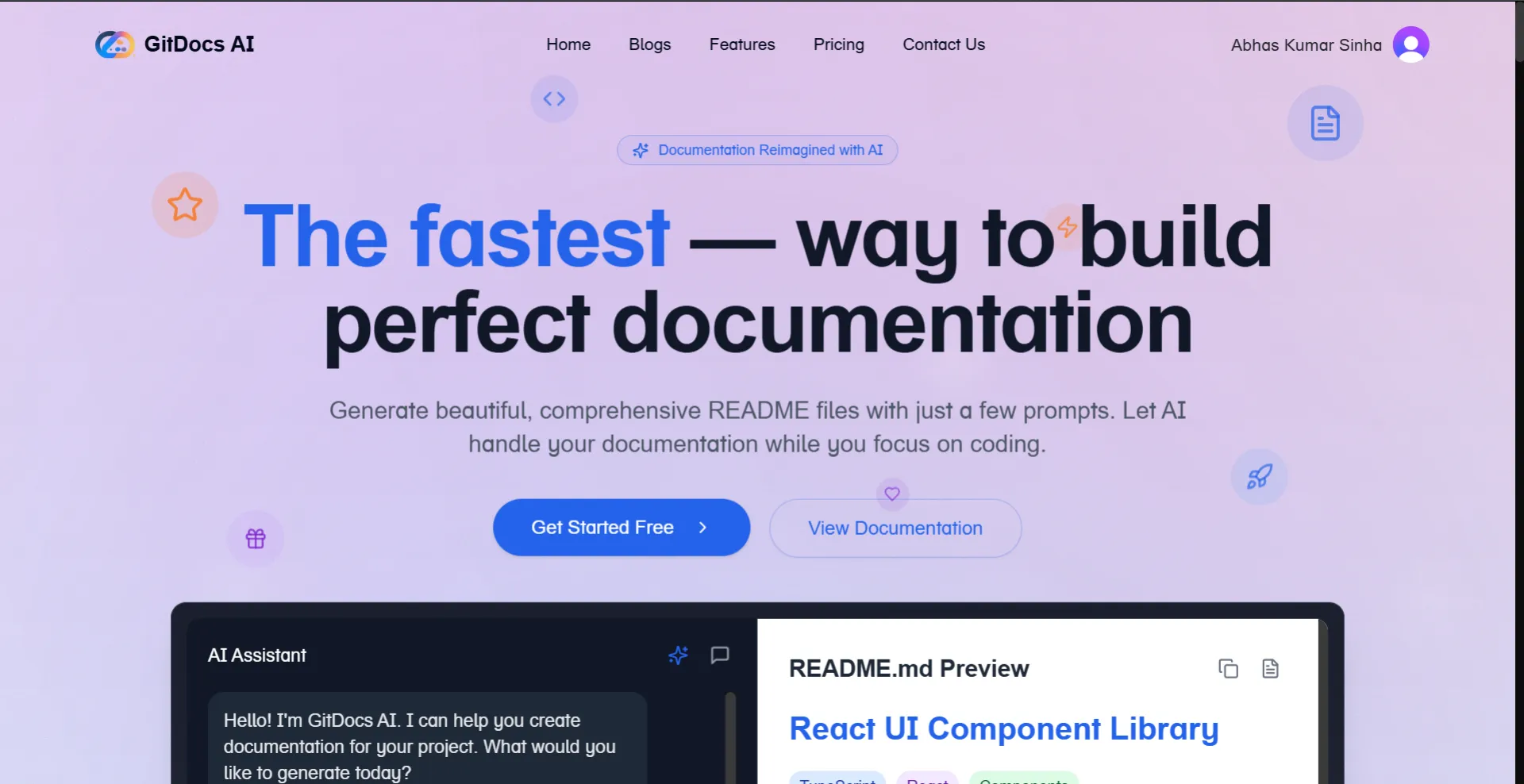
Hey everyone! 👋
Super excited to finally share something I’ve been building over the past few weeks — Gitdocs AI.
🧠 What is it?Gitdocs AI is a developer tool that analyzes the structure and content of a GitHub repository and generates a clean, professional README file using AI. It's designed to help devs ship better documentation without spending hours figuring out what to include or how to format it.
⚙️ How it works:- GitHub Integration: Users connect their repo, and the tool fetches metadata, file structure, and key code files.
- AI Analysis: It uses natural language generation (via locally run models or API-based, depending on setup) to generate a README draft with installation steps, usage instructions, features, and contribution guidelines.
- Customization Options: Users can tweak the tone (casual, professional, etc.) or focus areas (e.g., installation-heavy vs. feature-focused).
- One-Click Commit: The final README can be committed directly to the repo after review.
- Frontend: Next.js + Tailwind
- Backend: Node.js, Python (for AI processing), GitHub API
- Database: Supabase
- AI Integration: Custom prompt pipelines + optional Ollama local model support
README files are often overlooked, yet they’re the first thing people see. As someone who jumps between side projects, I found myself procrastinating the docs every single time. This was my attempt to solve that friction point — for myself and maybe for others too.
Would love your thoughts, suggestions, or even tough love if you spot something I could improve.
Thanks for reading! 😊
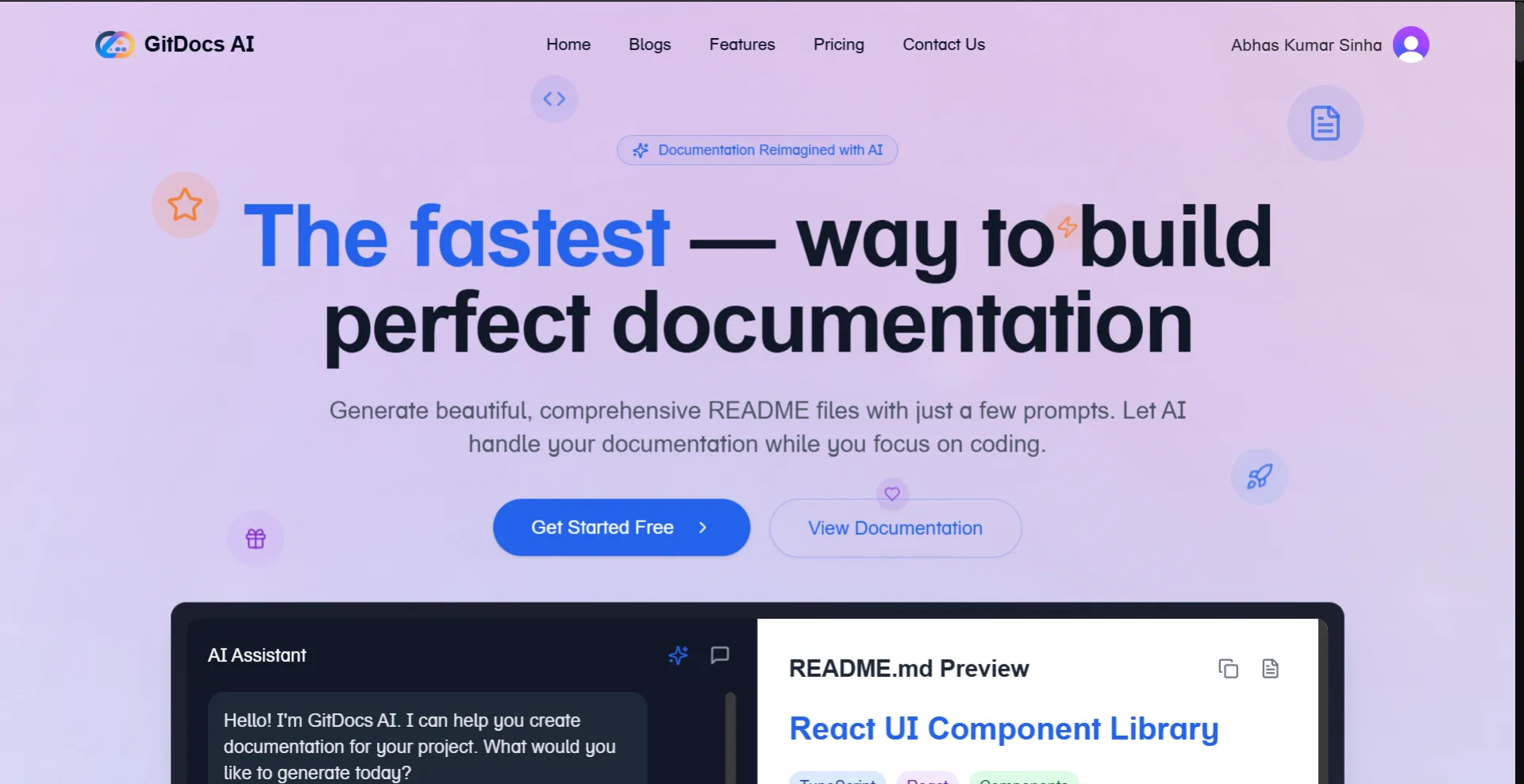
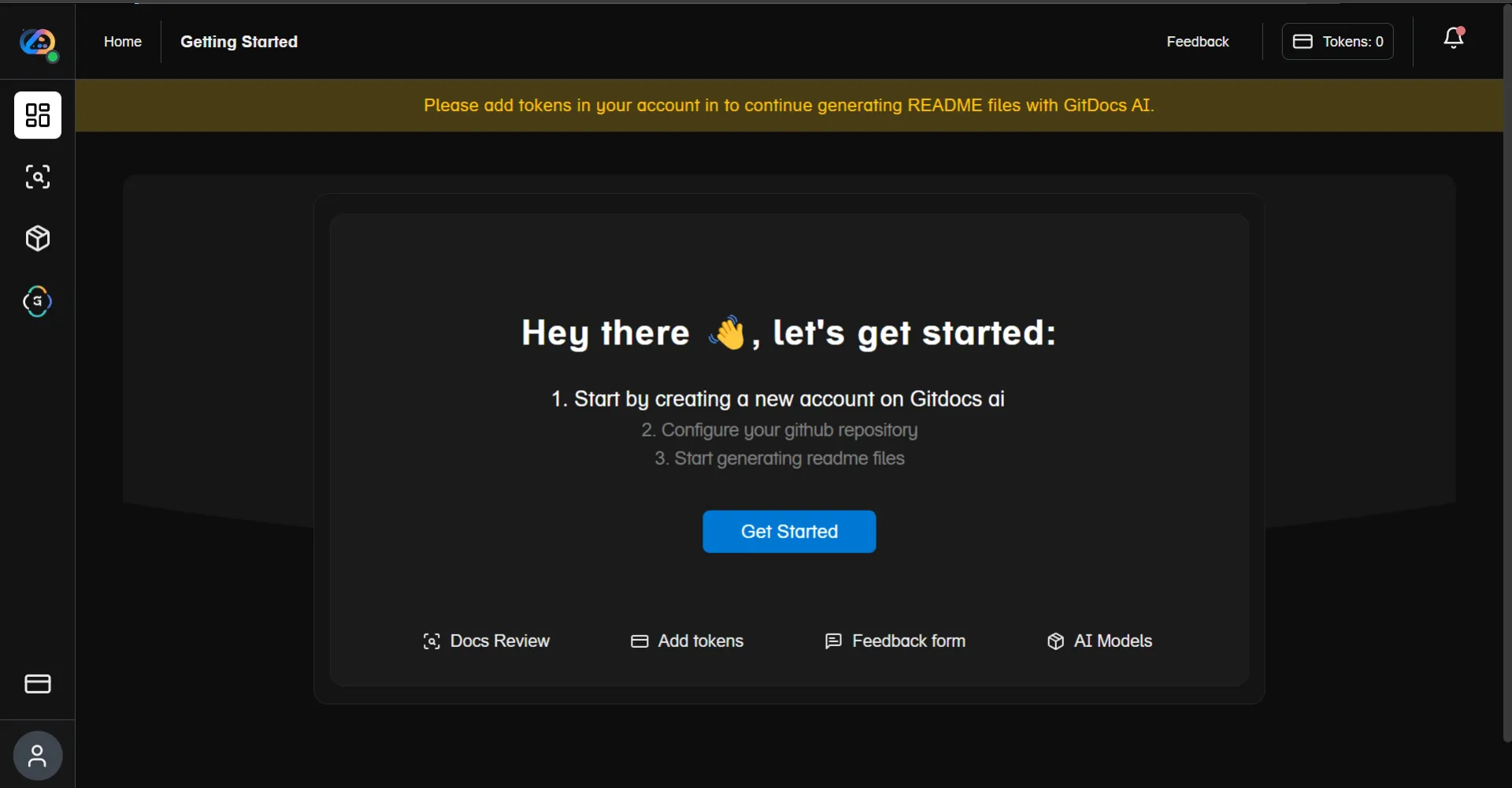
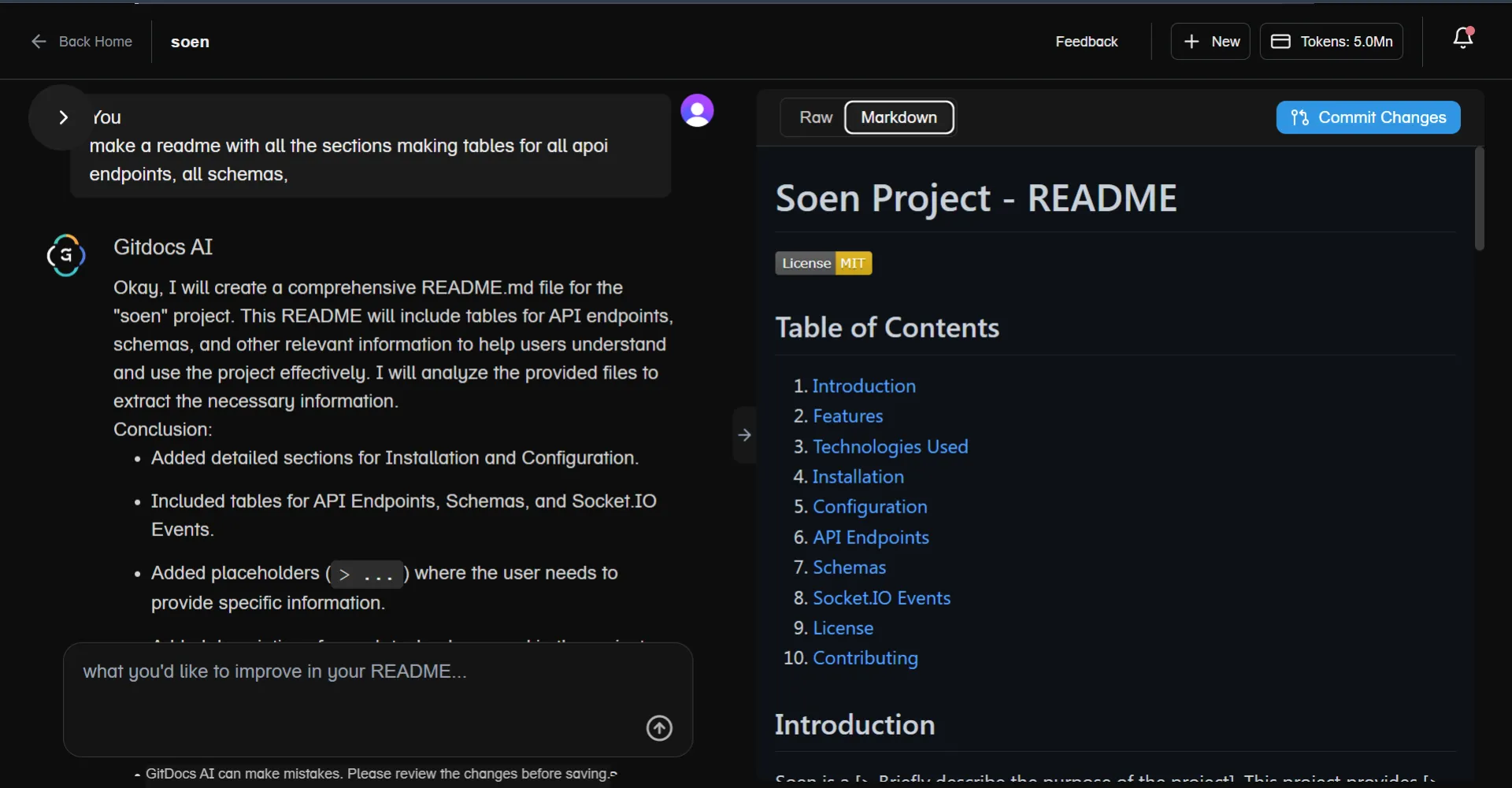
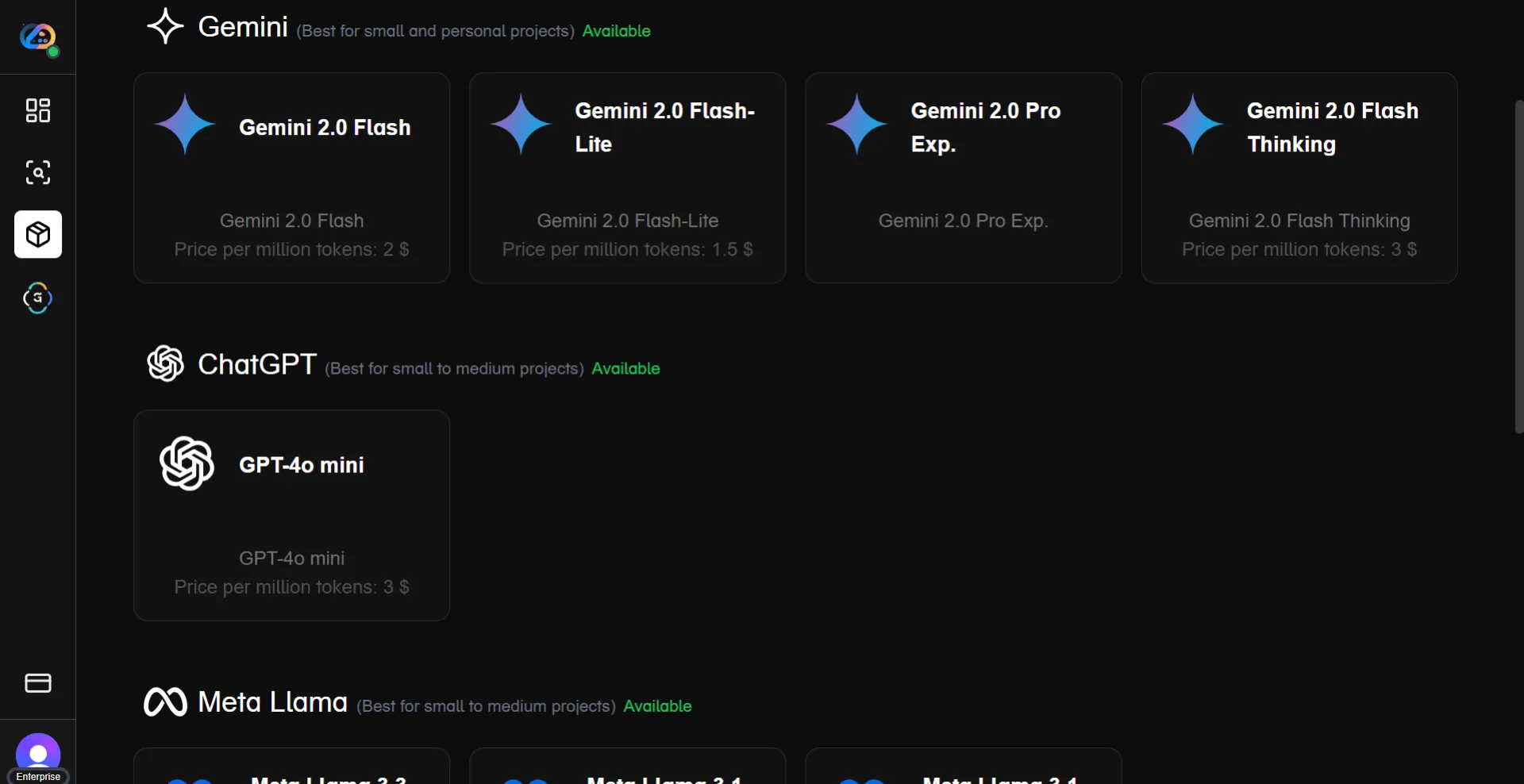
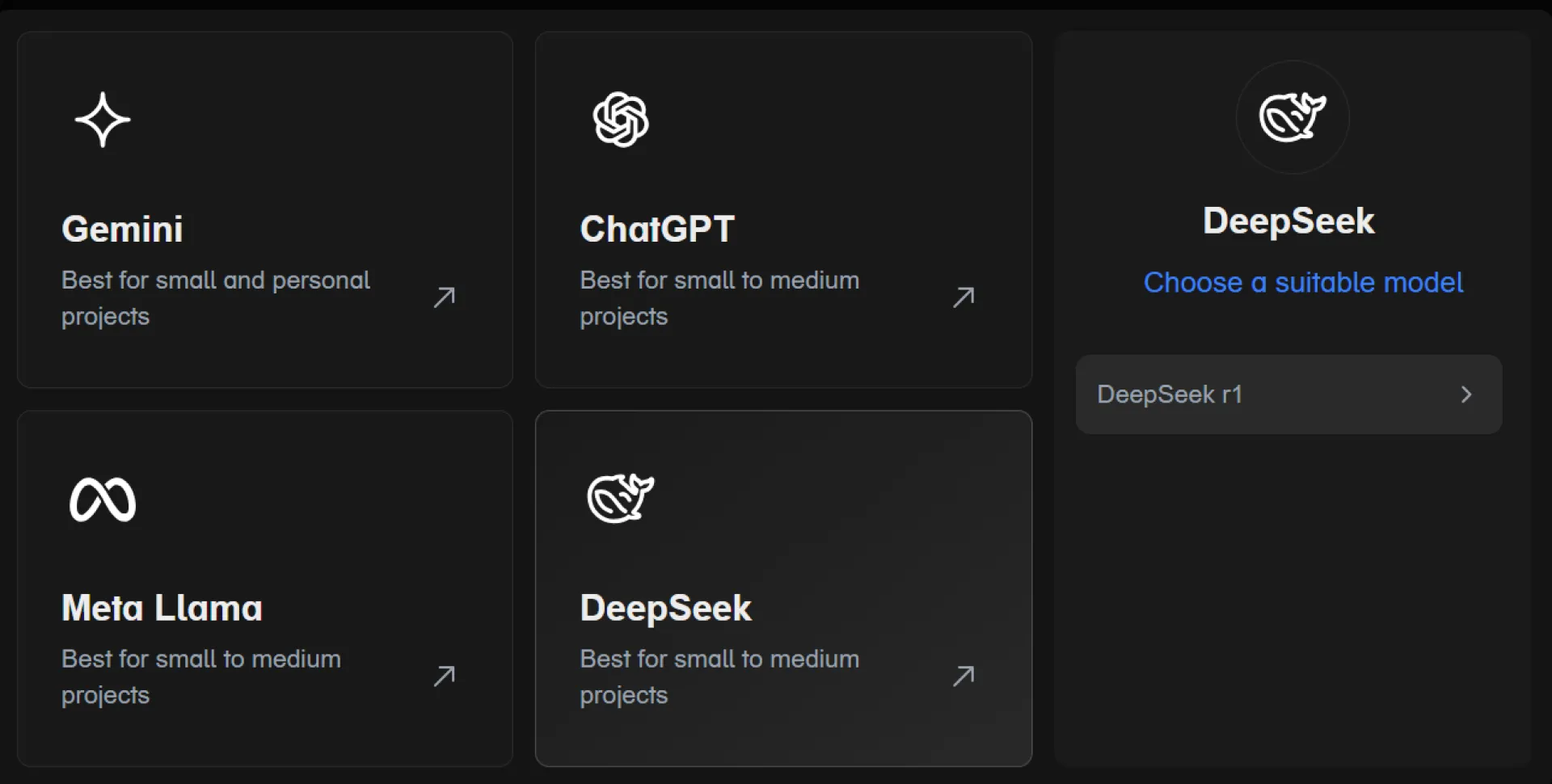
Hey folks! 👋
Super excited to share something I’ve been working on for a while:
DoCoreAI – a dynamic temperature profiler for LLMs that auto-optimizes your prompts without manual tuning.
🧠 The ProblemWhen working with AI models like GPT or Mixtral via OpenAI or Groq, I noticed a lot of devs (including me) were stuck tweaking prompts manually—changing temperature, adding random system messages, guessing what might help the output.
Fine-tuning? Too expensive and time-consuming.
Prompt engineering? Trial and error.
⚡️ The SolutionDoCoreAI takes your raw prompt input and dynamically adjusts:
- 🔍 Precision
- 🎨 Creativity
- 🤖 Reasoning style
- 🌡️ Temperature
All based on the context of your input — giving you more accurate, useful, and optimized responses on the fly.
It works with both OpenAI and Groq, and it’s completely open source.
💡 Why I Built ItThis started as a side project while experimenting with customer support AI.
I wanted AI to adapt intelligently to user intent, without hardcoding tons of prompt templates or tweaking settings manually.
Now it’s evolved into something I believe can help:
- Developers
- Prompt engineers
- AI researchers
- Anyone building AI-powered tools
- Python + FastAPI
- OpenAI & Groq support
- Swagger Docs for easy testing
- Cosine similarity for reuse of past “intelligence profiles”
Check it out on GitHub: https://github.com/SajiJohnMiranda/DoCoreAI
Or explore the idea behind it: Reddit
Would love thoughts, issues, stars ⭐, and feedback from fellow builders!
Thanks Huzzler fam! 🙌
Let’s build smarter AI tools—without overengineering the hard parts.

QForm – a simple way to build waitlists with referral tracking.
If you're launching a product and want to:
✅ Capture emails with a custom form
✅ Incentivize sharing with referrals
✅ Embed on your site or use a hosted page
QForm makes it ridiculously easy. No code, no clutter – just focused on helping you grow early. Tried to build the tool I wish I had during my last launch.
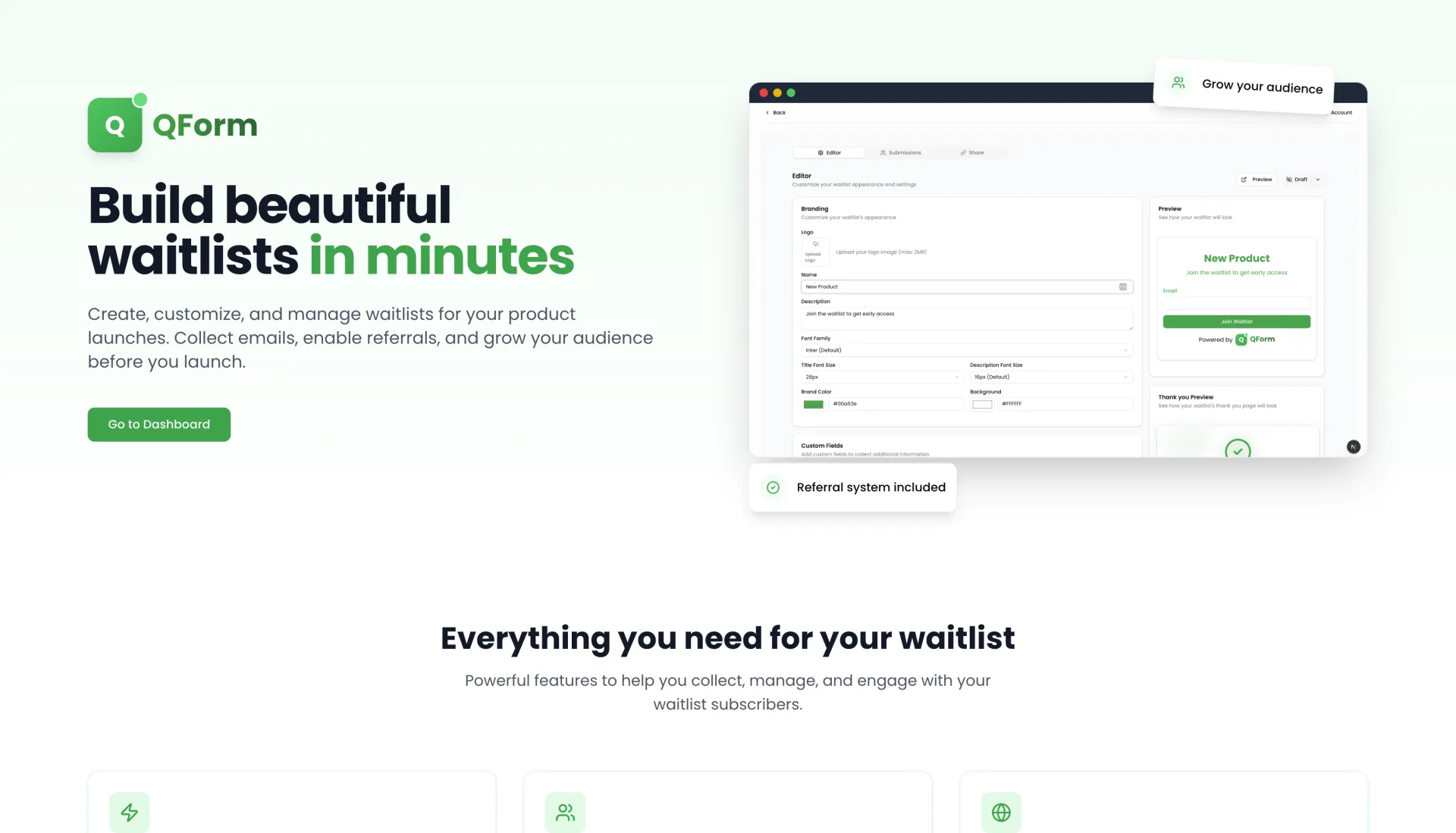
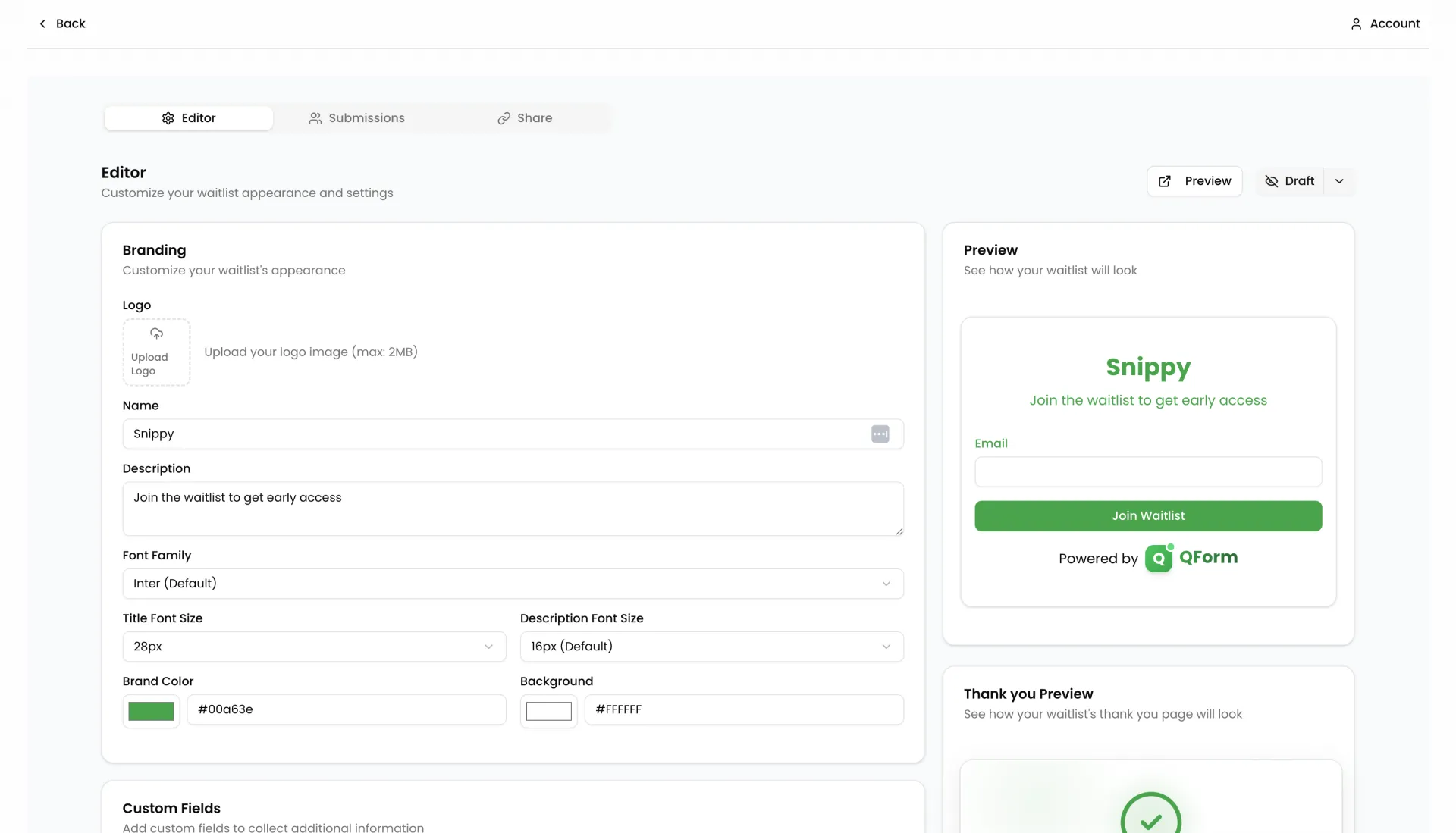
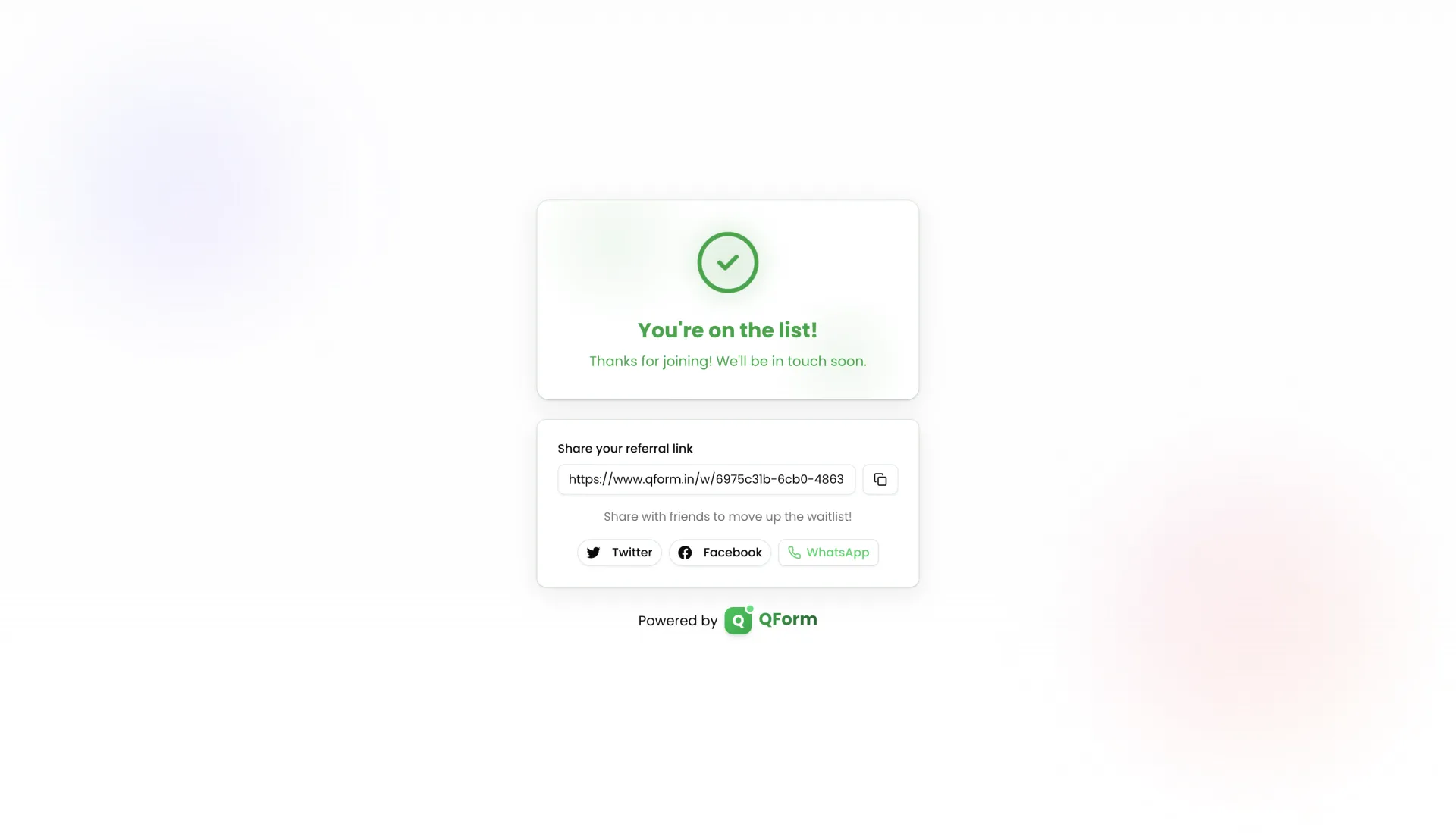
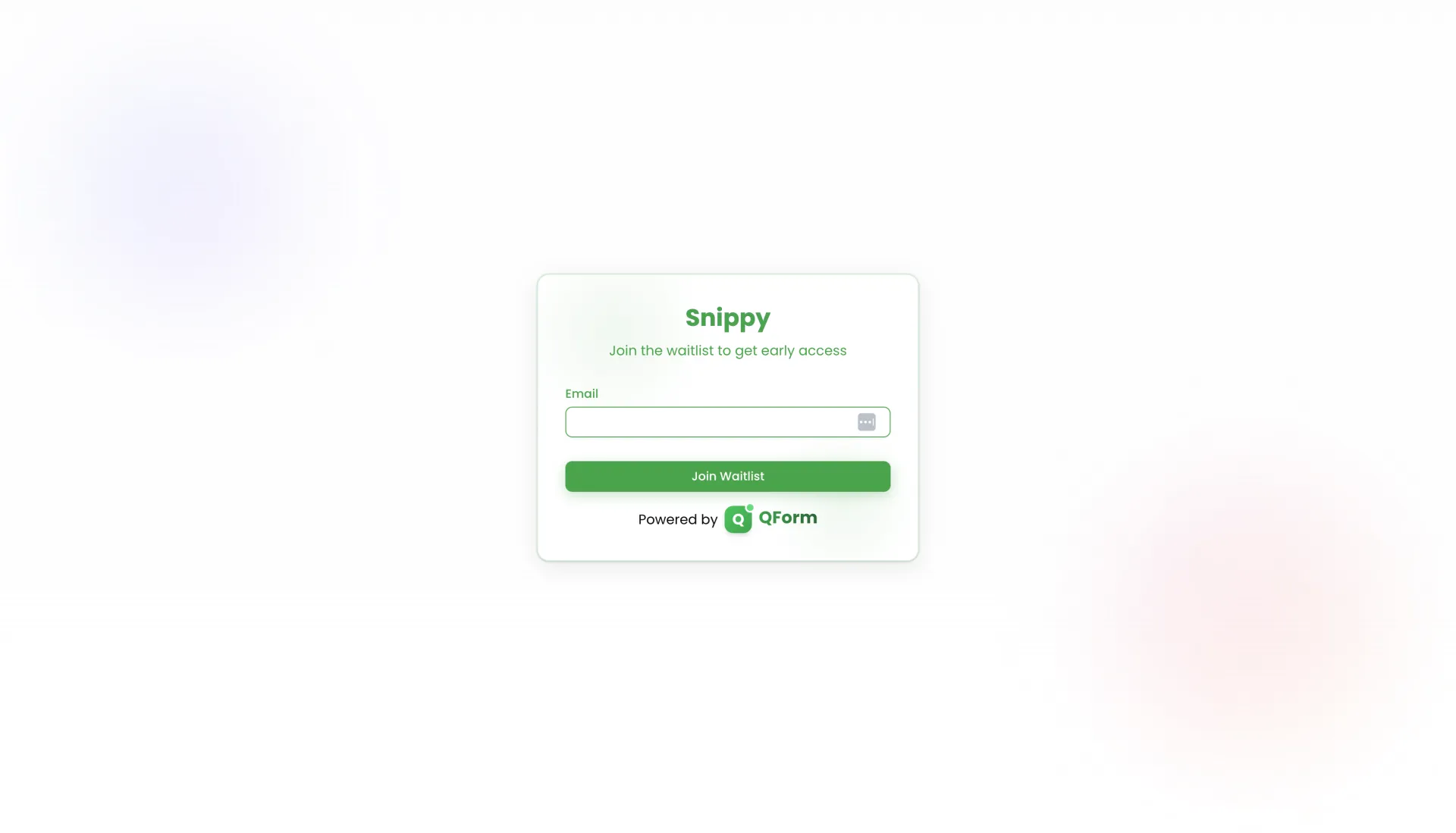
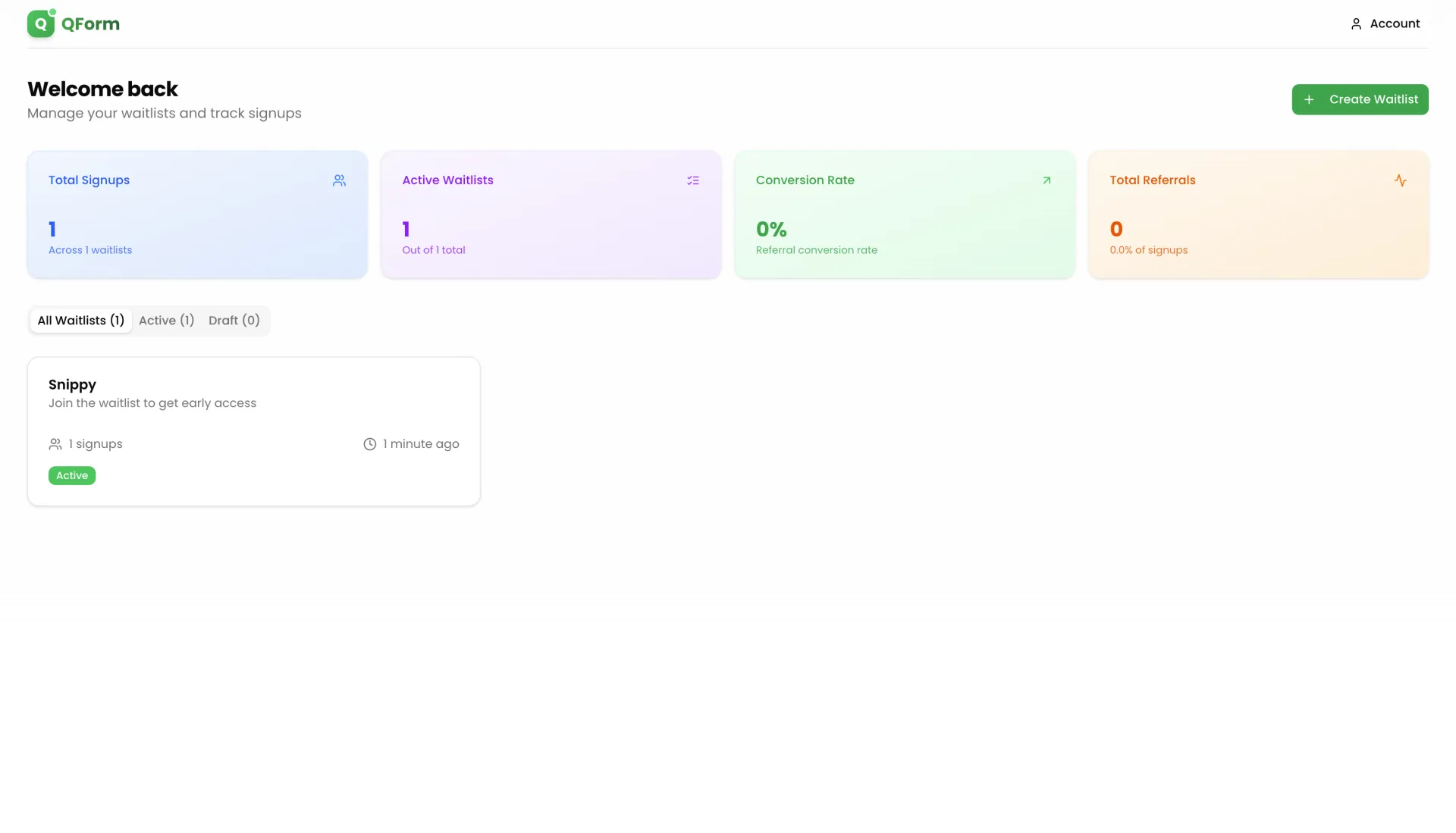
Hello everyone,
Building software always made me feel good. I liked the idea of programming an app for my specific use-case to fix a specific problem. But i never imagined making any of my work public because of how complicated things can get.
i am very excited to announce my first ever web application - Trackscription.
developing the application i mostly worked on the front end side while using Supabase as my backend. The whole application i built based on a service that i was looking for but could not find.
I live and work abroad so i had a lot of recurring payments and subscriptions to track. i could not find a simple, affordable and privacy friendly application that will let me track all of these recurring payments to show me a clear overview of all my expenses.
Here are some of the most important features:
Key Features:
- Automatic Subscription Detection: Import your bank statement and let Trackscription identify recurring payments for you.
- Client-Side Only: All logic runs in your browser. Your bank data is never uploaded or shared.
- Zero-Knowledge Encryption: Your data is fully encrypted using a zero-knowledge model — even the developer cannot see your info.
- Multi-Currency Support: Supports over 170 currencies.
- Smart Currency Conversion: You can enter subscription prices in any currency, and Trackscription will automatically convert them based on your selected main currency in settings.
it would mean very much for me if i can get any feedback no matter how small it is.
Thank you and have a nice day!
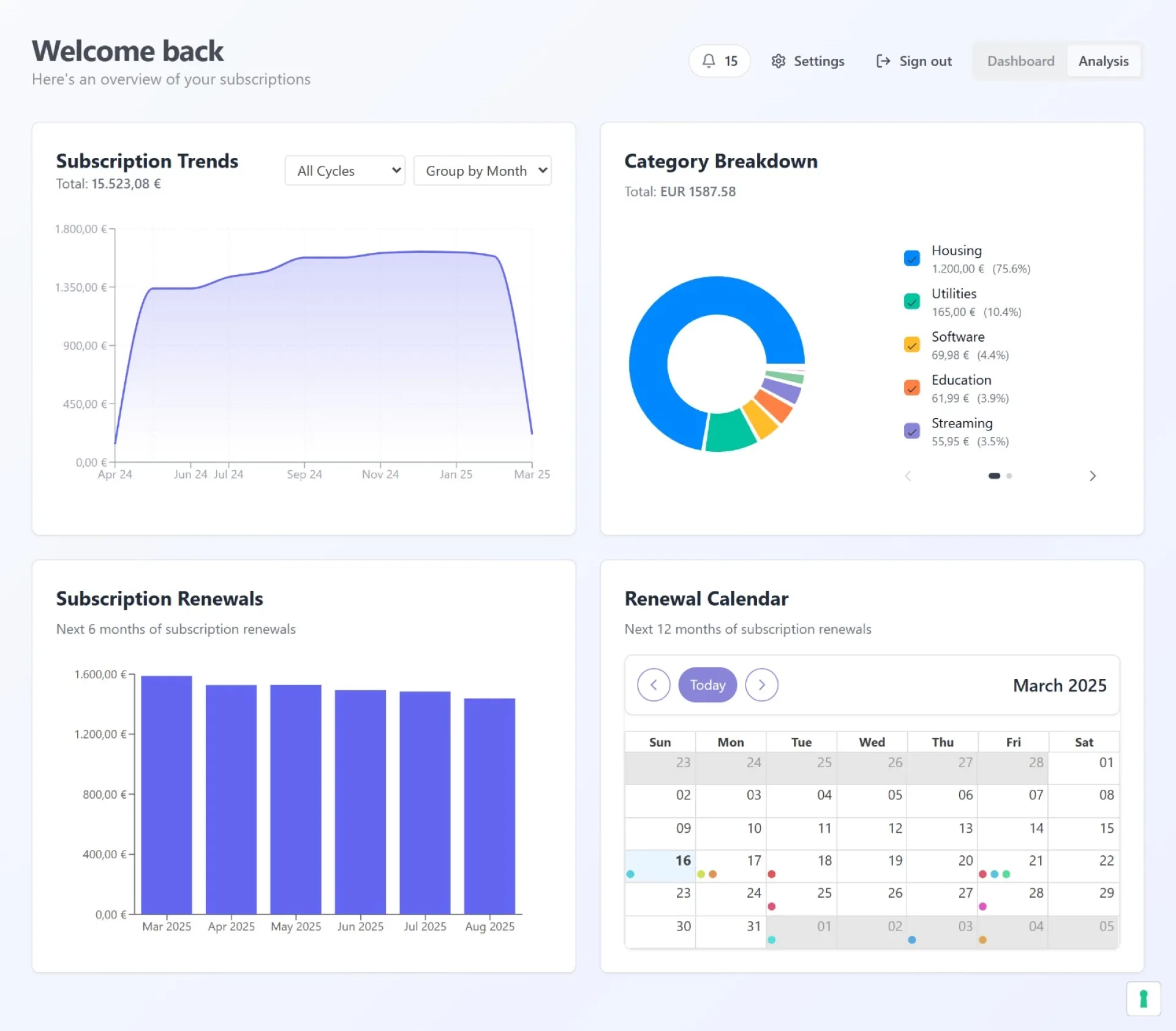
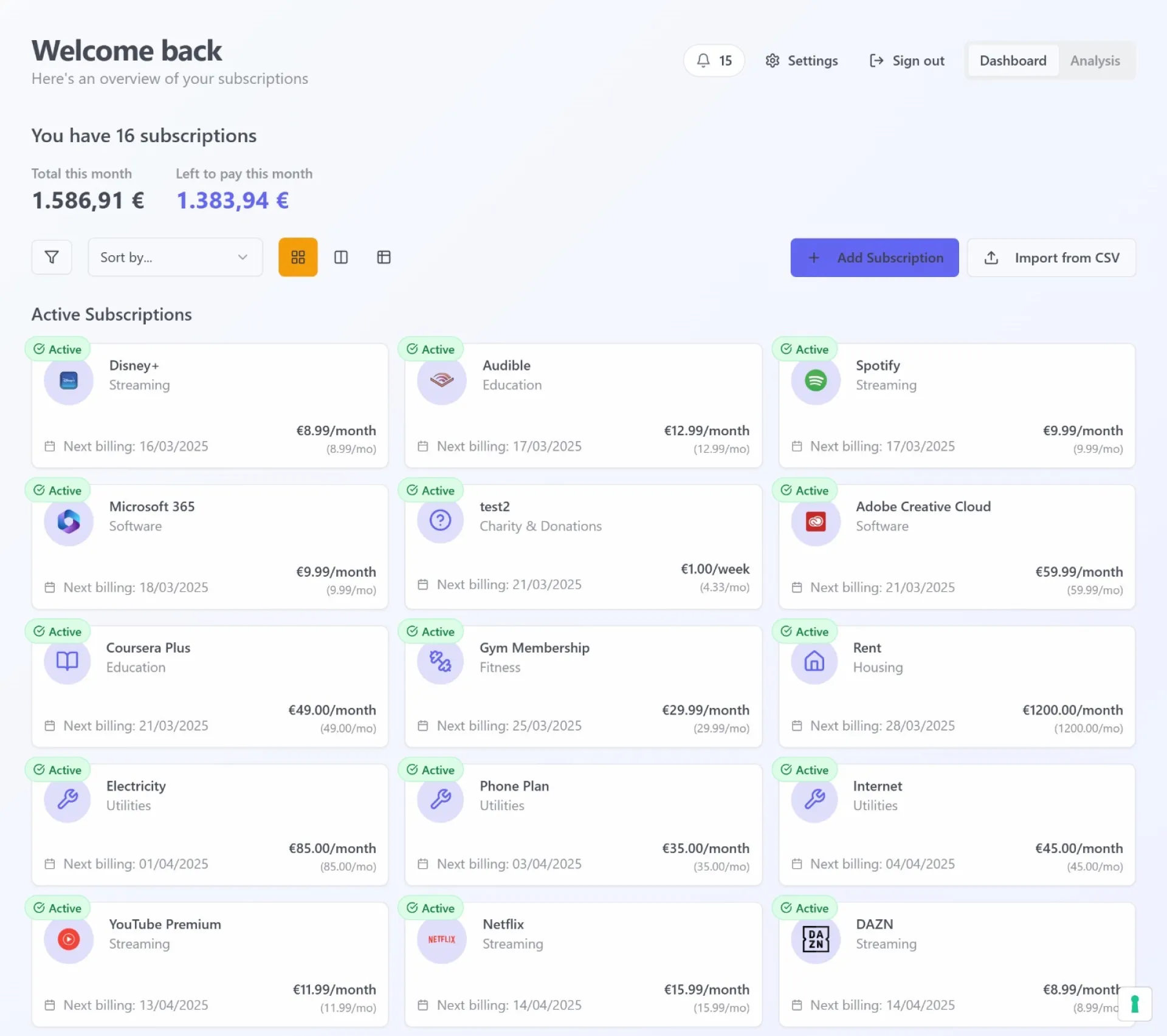
Hey Huzzler community!
After watching 1000+ of you launch here, I've started noticing a common pattern among SaaS launches:
Month 1-6: Build incredible product ✅
Month 7: Launch on Huzzler and get great feedback
Month 8: "No customers.. Maybe I need more features?" 🤔
Month 12: Still struggling with real customers... 😰
Here's the thing, almost everyone in this community can build. You're all incredibly talented.
We try posting on Product Hunt, tweeting, building in public... but our acutal customers are not browsing these sites. They're busy doing their jobs at companies.
That's why I'm building Customer Engine: a systematic approach to getting customers where you get exact daily tasks to get your first B2B customers.
Instead of: "What should I do today to get customers?"
You get: "Send 8 LinkedIn requests to marketing managers using template #3"
And you can actually see what's actually working for other founders (with real numbers).
Question for you guys: What's your biggest problem after launching your product? Is it getting the first real customers (who are not founders themselves)?
Would love your thoughts!
Waitlist: customerengine.co

Hey community! I’m excited to share a project I’ve been working on: RepuShield AI, an AI-powered platform designed to help small and medium-sized businesses (SMBs) worldwide protect their online reputation. As a founder passionate about empowering SMBs, I wanted to create a tool that levels the playing field, giving them affordable access to the kind of reputation management big corporations often take for granted.
What We Built: RepuShield AI tackles a universal problem for SMBs: the devastating impact of negative online reviews and social media backlash. Did you know that 88% of customers trust online reviews as much as personal recommendations, and a single bad post can cost a business 22% of potential customers? For SMBs, this can be a make-or-break issue, especially when they lack the resources to monitor or respond effectively.
Our platform uses AI to provide proactive protection and real-time insights:
• RepuGuard: Shields businesses from negative press by identifying risks early.
• BrandPulse: Tracks social buzz and market trends across platforms in real-time.
• Insight360 (coming soon): Offers unified analytics to uncover growth opportunities.
• CreativeFlow AI (coming soon): Automates content creation and social scheduling to maintain a positive online presence.
We’re currently in the pre-launch phase, building a waitlist of SMBs eager to try it out. One of our standout offerings for early adopters is a free $499 personalized reputation report. This report analyzes a business’s online presence, identifies vulnerabilities, and provides actionable insights tailored to their specific market and industry, all at no cost. It’s been a rewarding challenge to design this report to deliver real value, and I’m excited to see how it helps SMBs take control of their digital identity.
How We Built It: The journey started with identifying the gap in the market: most reputation management tools are either too expensive or too complex for SMBs. I leveraged my background in digital marketing and AI to design a solution that’s both affordable and user-friendly. We built the core platform using natural language processing (NLP) and machine learning to analyze online mentions with high accuracy, ensuring SMBs get actionable insights without the tech overwhelm. The biggest challenge was balancing advanced AI capabilities with a simple interface, something we’re still refining based on early feedback. We’re also planning multi-language support to truly serve SMBs globally, which has been a fascinating learning curve in understanding diverse market needs.
Why It Matters: SMBs make up over 90% of businesses worldwide, yet they often lack the tools to protect their reputation effectively. RepuShield AI aims to change that by offering enterprise-grade protection at a fraction of the cost. I’m proud to see businesses from multiple countries already joining our waitlist, showing there’s a real need for this solution.
What’s Next: We’re focused on launching soon, with early adopters getting exclusive perks like a 20% discount on their first year and priority access to new features. I’d love to hear your thoughts. what challenges have you faced with online reputation, and how can we make RepuShield AI even better for SMBs? Let’s keep the feedback constructive and keep growing together!
